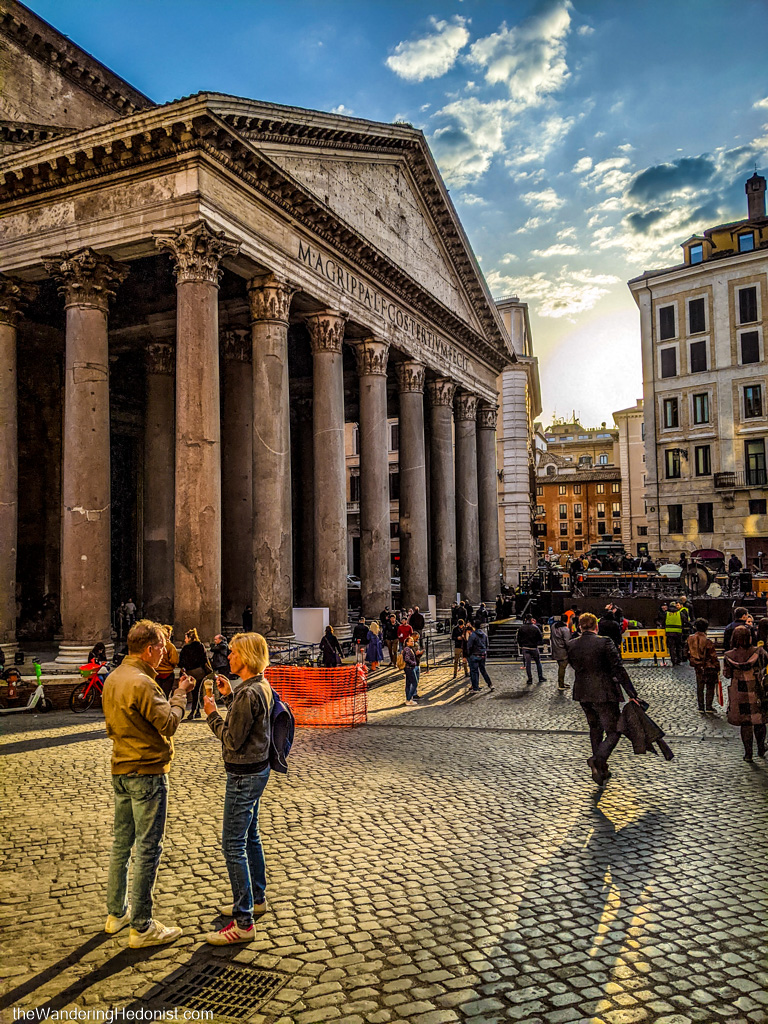
As we’ve travelled throughout Europe over the past few years, there are few places that were not touched and shaped by the ancient Roman Empire. From the UK to Turkey and far beyond. Even the width of the railroad tracks that ran through my hometown are the standard width of the Roman Chariot. And that’s without touching on the cultural legacy. So much of my education centered around the history of Rome. Around the art and architecture of Rome. To the point that a real place called Rome that I could visit and see these icons of antiquity seemed so unreal. So I was very excited to finally get to visit. On our last pass through Italy, Rome was our next stop before covid shut the country down. Actually we flew out of Rome but never got to see the city. So when we decided to use our last few months of travel to focus on Italy once again, Rome had to be our first stop. We only spent a week in the city but I feel like we really got the most out of it.
There are so many places to see in Rome. But this article focuses on the Old Rome region where the ancient city was centered. This is the area where you’ll find all the postcard spots. The ruins of long gone buildings. Giant pillars suggesting the grand palaces that once stood. It’s overwhelming but we did our best to fit it all in.
Walking around the Old Rome region.
Honestly, walking around the Old Rome region was maybe the least fun in terms of just hanging out because it had the largest crowds. The major sites were mobbed with tourists taking pictures and it felt a little disingenuous to take the postcard picture without including the herds of humans crammed in to take the same photo. And we never wanted to linger in those areas. But on the other hand, these are the most famous locations that a trip to Rome without seeing would seem incomplete. I’m all for skipping the lines and getting lost in lesser known parts of a city but how can you go to Rome without seeing the Colosseum or the ruins of the Roman Forum? It’s worth a little effort to visit in my opinion. But if you have the option, though it’s convenient to stay here, I suggest picking a place outside of Old Rome. The Trastevere neighborhood across the river is much more fun and affordable. Or somewhere in the Regola neighborhood where we stayed.
There are also lots of side streets and places to get lost away from the tour book spots and that’s where I felt most comfortable. The spots inbetween places.
All that said, planning for the crowds worked out well for us. We saved this area for mid week to miss the weekend tourists and tried to hit major attractions in the afternoon after the tours have departed which seemed to work out really well for the line at the Pantheon and Vatican. But the walk-by spots like Trevi Fountain and the Spanish Steps seemed to always be mobbed.
The Pantheon
Built originally by Marcus Agrippa between 27 BC – 14 AD, the original structure burned down, was rebuilt, burned down, then rebuilt again in its current form by emperor Hadrian in 126 AD and has survived so well primarily because it has been in constant use ever since. Especially after it was converted to a Christian church in 609AD (Basilica of St. Mary and the Martyrs) and remains an active church. The church houses the remains of many famous Italians including the painters Raphael and Annibale Carracci.
The structure remains the world’s largest nonreinforced concrete dome. The height of the oculus and the width of the room are both 142 feet which would allow for a perfect 142 foot tall sphere to exist in the space. The dome weighs 4,535 tons and is 21 feet thick at the base and around 4 feet at the oculus along with a variety of clever internal design to disperse the massive weight.
As a church, entrance is free to everyone, and the line is notoriously long. So we arrived midweek in the evening to miss the crowds. The line still stretched around the entire square but it moved very fast and maybe within 15-20 minutes we were inside. People are routed around the perimeter of the room and back out so the traffic is pretty fast in and out. The visit was surprisingly painless. Outside in the square a huge percussion band was setting up for some show later that night but we didn’t get to see it.
Trevi Fountain
Another famous stop that we knew was going to be absolutely polluted by tourists. And it was. The walk all the way around was packed with people. So we saddled into the front section, took our pictures, and got the hell out of there. This was midweek in the late afternoon. It’s just going to be crowded all the time unless you get there at sunrise. Which I never will.
This is the largest baroque fountain in the city at 86 feet high and 161 feed wide and maybe one of the most famous fountains in the world. Designed by Nicola Salvi and completed after his death in 1762. Built at the terminus of the Aqua Virgo, an aqueduct fed from a pure spring from legend discovered with the help of a virgin and built in 19BC and fed into the Baths of Agrippa, the first Roman public bath, that operated until around 530 when the Ostrogoths destroyed the Roman aqueducts (and later restored in 1453).
The tradition of throwing a coin in over your shoulder was popularized by the movie Three Coins in the Fountain (1954), which I recently watched, and today around 3,000 euros are tossed into the fountain every day. In 2016 it was estimated that $1.5 million was thrown into the fountain. The money is donated to Charity Caritas to help the poor.
The Spanish Steps
Built in 1725 to connect the Trinità dei Monti church and Piazza Trinità dei Monti at the top with its Egyptian obelisk to the Holy See and Piazza di Spagna at the bottom with its Fontana della Barcaccia (Fountain of the longboat) built in 1629. The fountain was built by request of the pope who had seen a boat carried to the spot by the flooding Tiber.
This is a popular spot with the tourists, appearing in many movies, and close to the other classic tourist spots. So it’s always crowded. You’re not allowed to sit on the stairs, police will walk through making people stand up in intervals, so there are crowds of people just standing in groups and the fountain is typically ringed with a crowd. I was glad to see it but we didn’t stay long.
Trajan’s Column and the Altar of the Fatherland
I remembered Trajan’s column from my art history books and made a point to look it up. But I needn’t have bothered because it’s right in the center of town along the Piazza Venezia and its epic round about and beside the iconic Altar of the Fatherland just south of the ancient Roman Forum.
The column sat within Trajan’s Forum and was completed in 113AD, built in parallel with the forum. The column including base is 125 feet tall comprised of 20 drums each 12 feet wide and weighing 32 tons and a capstone weighing 53.3 tons that had to be lifted 112 feet. An internal spiral stone staircase leads to the top with 185 stairs. Around the column is a 620-foot frieze that winds around the shaft 23 times and depicts the Roman emperor Trajan’s victory in the Dacian Wars.
Trajan’s Forum is all but rubble but the column still stands and after several earthquakes stands at only a half of a degree off of vertical.
The forum interestingly was an enormous marvel of construction and survived intact for over 700 years until it was dismantled for its building materials in the mid 9th century. By the 10th century the site of Trajan’s Forum was semi-rural with a patchwork of houses and farmland. By the 16th century the forum lay under 12 feet of earth and the area urbanized. In 1526 the surviving arch that was the entrance to the forum was demolished by Rome’s Commissioners of Streets. And then in between 1924-33 Mussolini built a road between the colosseum and the Piazza Venezia and systematically demolished over 40,000 square yards of one of the most densely populated areas of Rome, destroying medieval and renaissance structures and displacing 746 families. Ironically by doing so the construction unearthed the forums of Trajan, Augustus, Caesar, and Nerva and Trajan’s Market that were hidden under the buildings. Sadly, most of the artifacts found were boxed and sent to storage without any data as to their placement or other information making it impossible to reconstruct the sites.



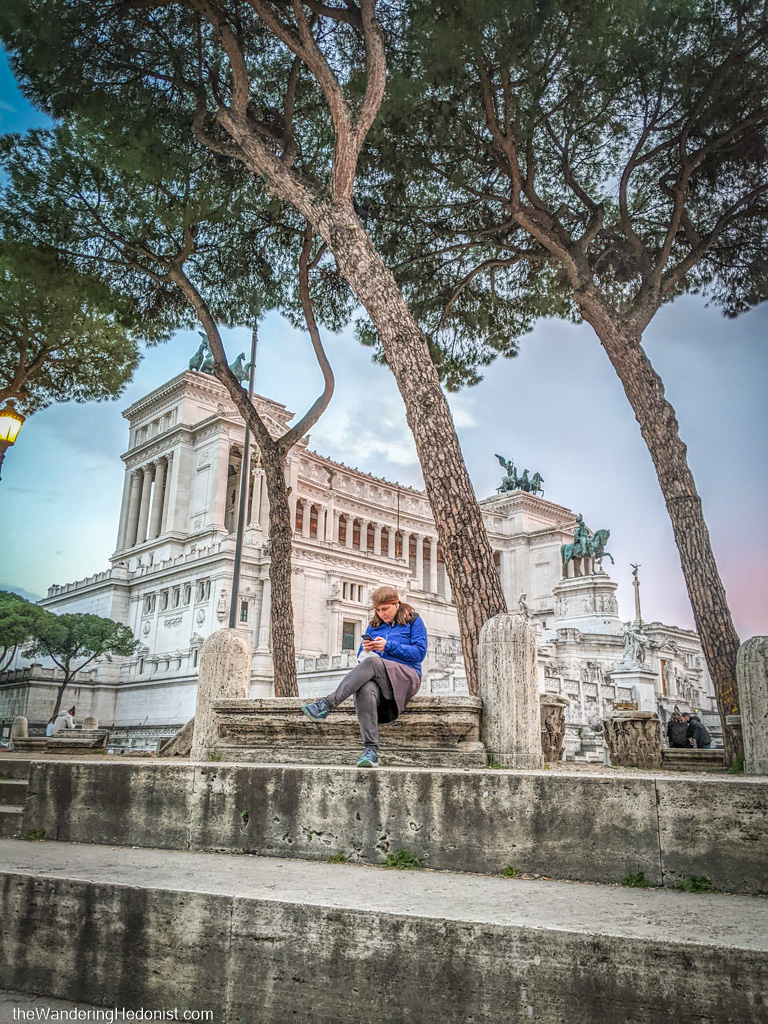
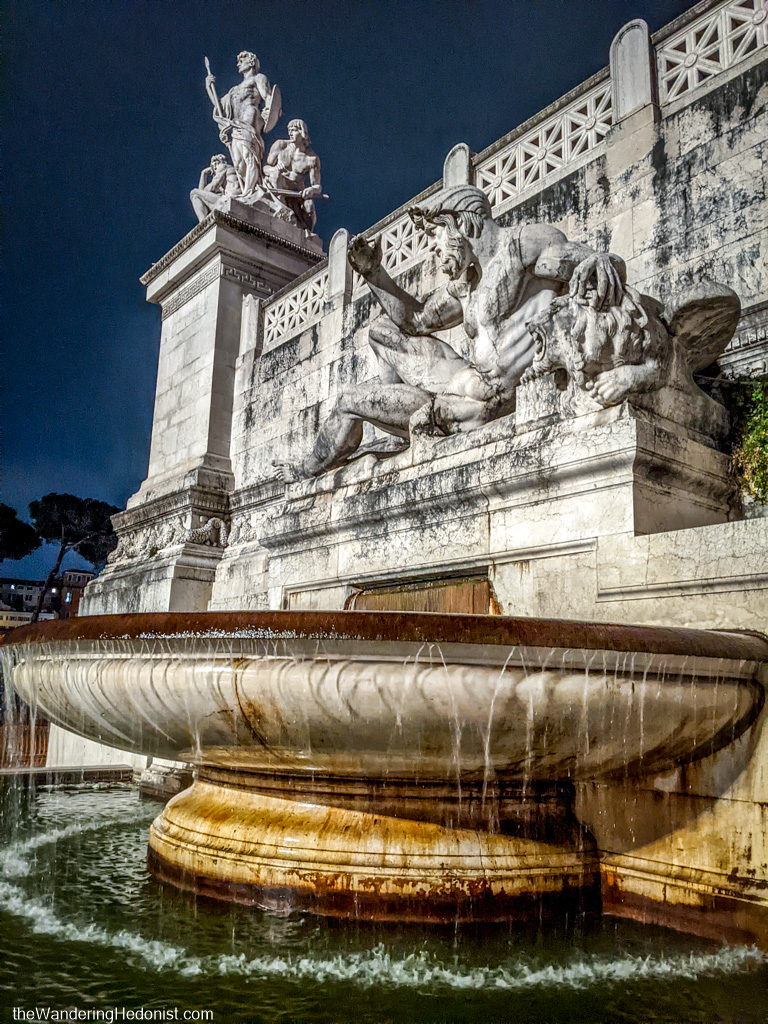
The Colosseum
The area where the Colosseum now sits used to be the private residences of Nero who seized the area after the fires of 64AD. After Nero’s suicide, the area was reclaimed, his lake filled in, and the Colosseum built on top, commonly seen as the return of land to the people. Unlike most other amphitheaters built on the outskirts of town and usually along hillsides, the Colosseum was built in the direct center of ancient Rome and completely freestanding. The name colosseum which in English can be used interchangeably for amphitheater was not so at the time. Nero had a colossal statue made of himself modelled after the Colossus of Rhodes which still stood by the amphitheater when it was built between 70-80AD, originally called the Flavian Amphitheater, and only labeled Colosseum around 1000AD to distinguish it from the Colossus Solis, a modified version of Nero’s Colossus. The amphitheater’s construction was financed by the plunder of Herod’s Temple and the sacking of Jerusalem.
What I found interesting that is not well represented in history was its state during medieval times. By the late 6th century, the structure had radically changed. The interior had been converted to a variety of shops and houses and living spaces, essentially its own mini-city, with a church built inside and the arena floor converted to a cemetery. These spaces were recorded to be rented out until at least the 12th century which means for 600 years it survived in this state. After that in 1200 a family purchased the structure, fortified it, and used it as a personal castle, until an earthquake in 1349 caused half of it to collapse. The rubble was used for building material and the site referred to as a quarry where it was systematically dismantled for building stone. A religious order moved into the remains and occupied it from the mid 14th century to the 19th century. It wasn’t until 1749 that the Pope took an interest in the structure and forbade its use as a quarry, declaring it a sacred site of Christian martyrdom. The hypogeum, the complex subterranean structures, which had been completely buried for over a thousand years was not excavated until the 1930s by Mussolini.


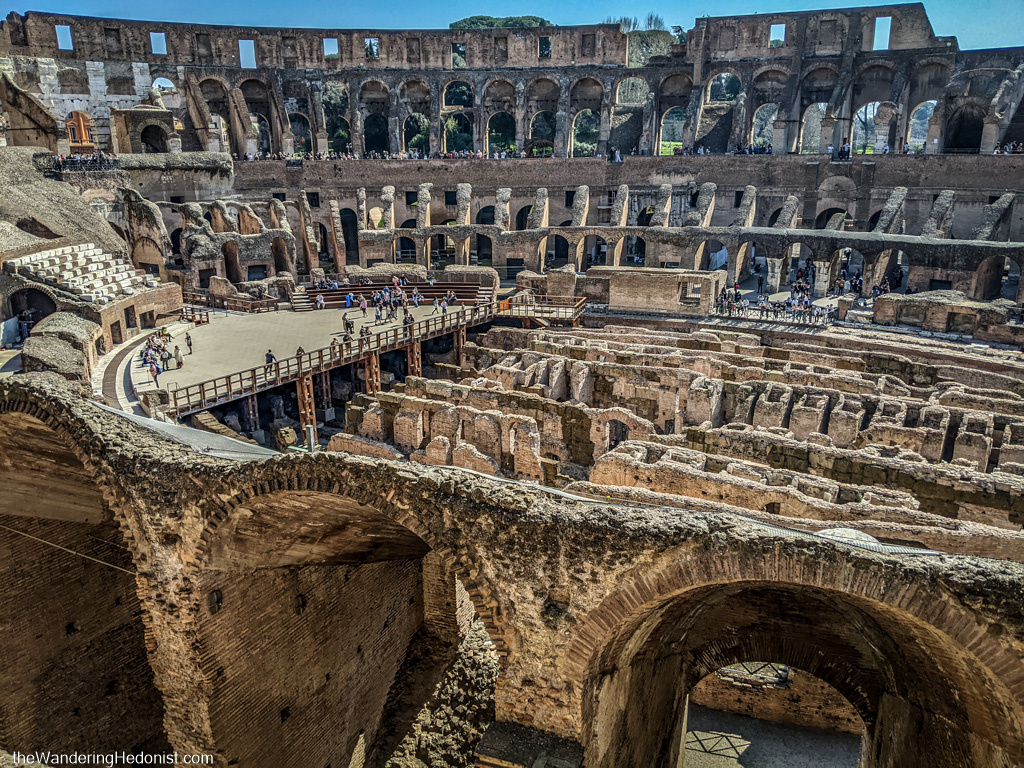
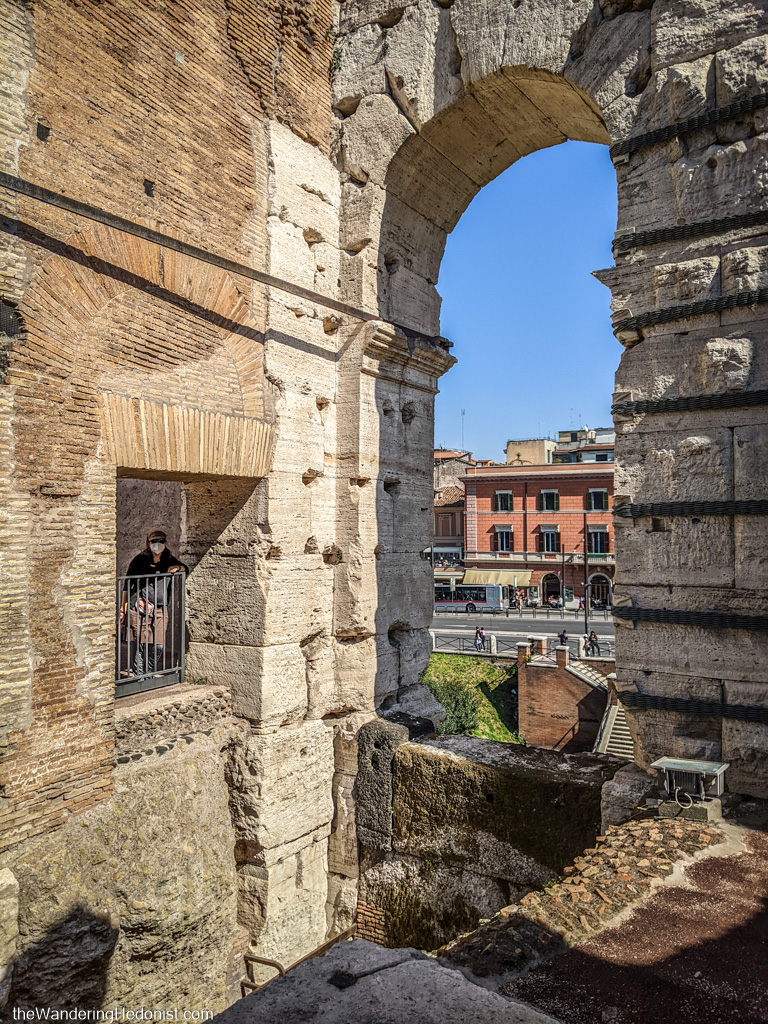

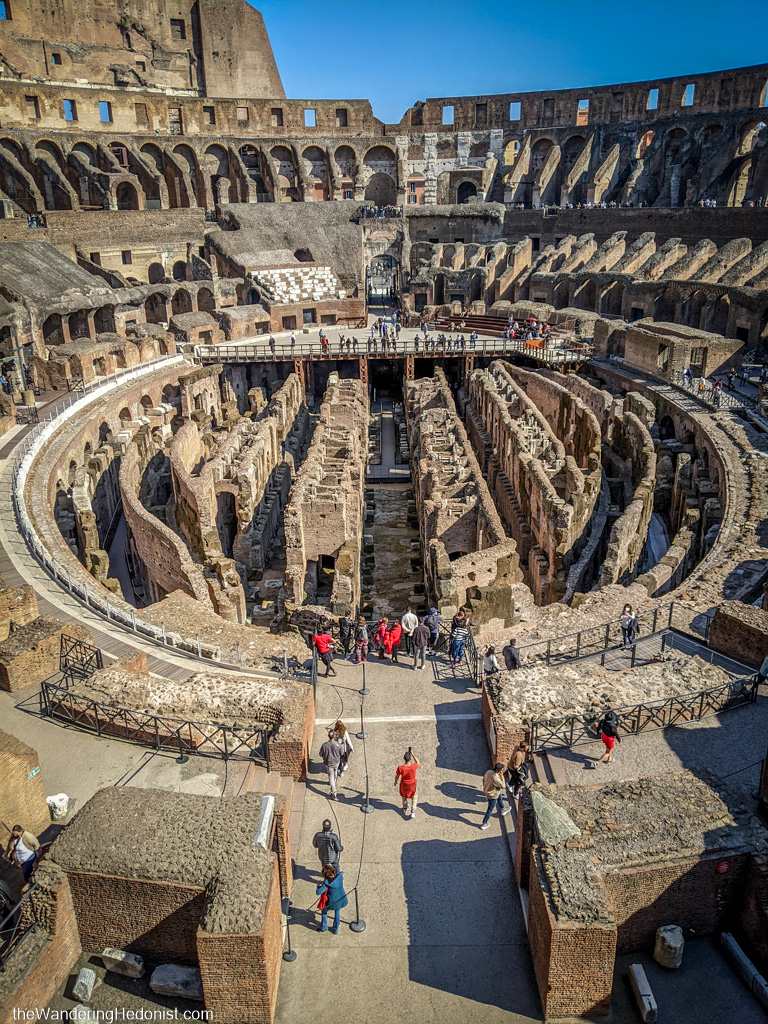
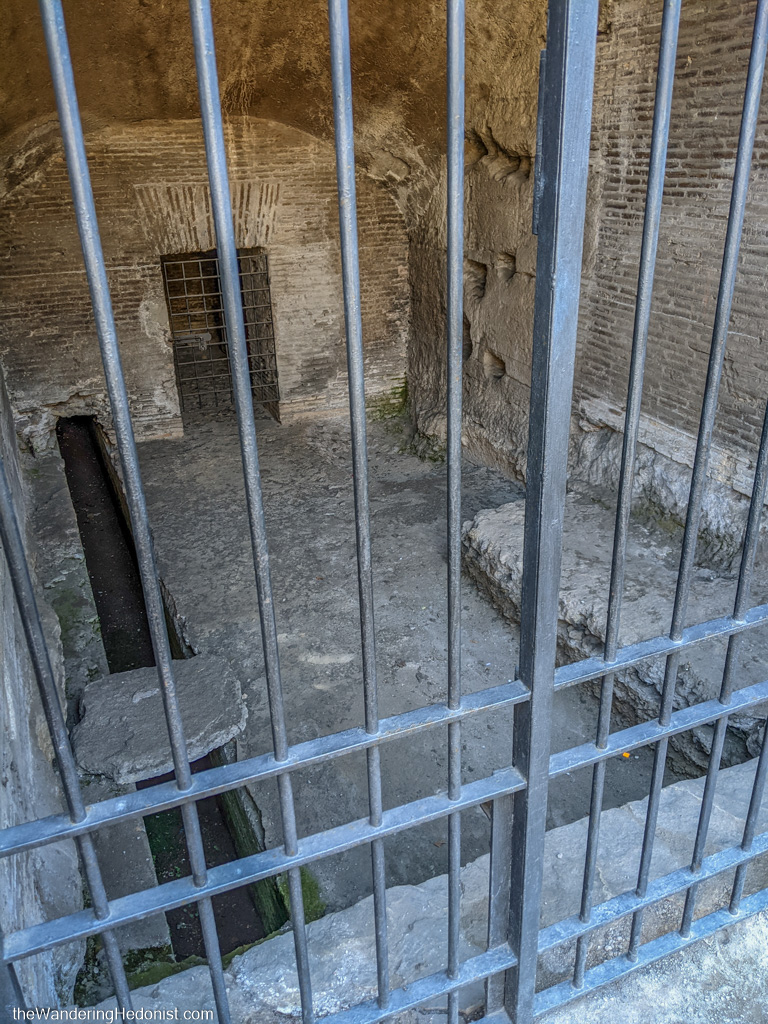


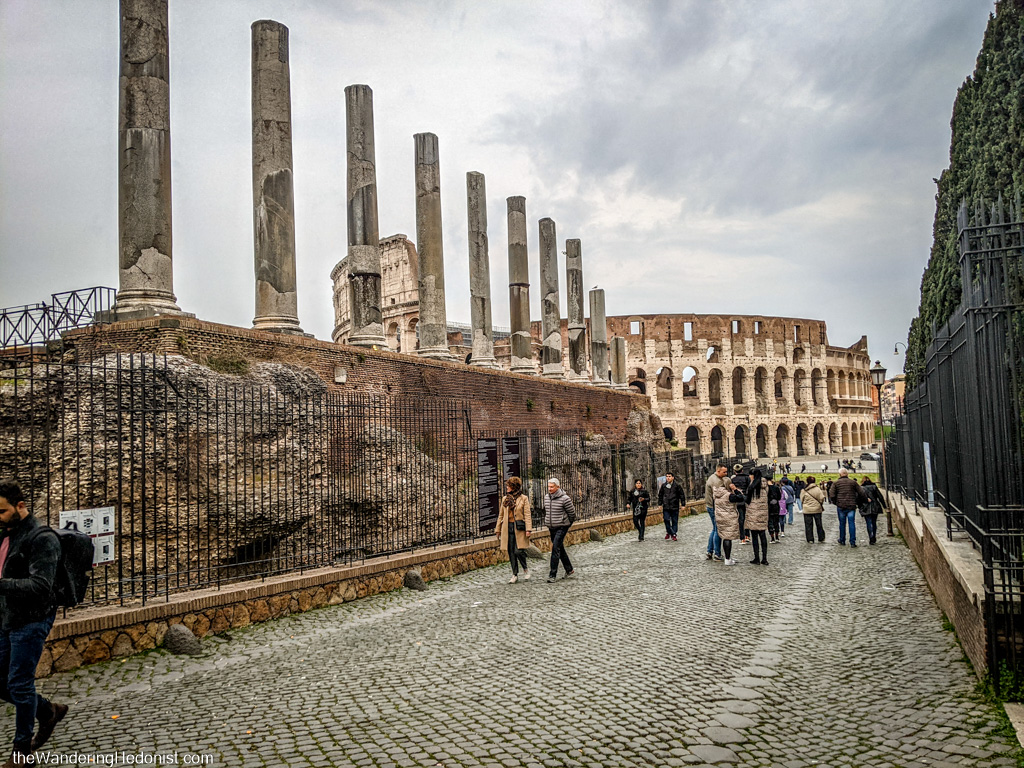
The Roman Forum and other buildings in the Colosseum area.
Sadly, I tore my calf muscle right as we were leaving the Colosseum and could not continue on to Palatine Hill where many of the ancient Roman structures can be found, including the ruins of the old Roman Forum. I did get a few night shots of the forum a couple of days before and visited a few buildings near our apartment on the edge of the Colosseum district. But overall a huge disappointment. If we ever return this is the first place I will explore. Palatine Hill is enormous with lots of secondary attractions to visit. I recommend a full day just for this one area instead of trying to pair it with the Colosseum.
Piazza Navona
Built on the site of the first century Stadium of Domitian or Circus Agonalis, the plaza follows its shape. The city’s market was moved here in the 15th century and became an important social space. The plaza is dominated by the Fontana dei Quattro Fiumi or Fountain of the Four Rivers (1651) by Gian Lorenzo Bernini and features the Egyptian-style Obelisk of Domitian. The fountain depicts four river spirits guarding four rivers, representing the four continents through which the papal authority flowed. The Nile representing Africa, the Danube representing Europe, the Ganges representing Asia, and the Río de la Plata representing the Americas.
The Vatican – Vatican Museums
When you visit the Vatican there are two main attractions and two entrances on opposite sides of the area. The first is St. Peter’s Basilica, and the second is the entrance to the Vatican’s extensive museums housing art and works from around the world and ornately decorated chambers and chapels decorated in frescos from famous renaissance painters, the most famous of which is the Sistine Chapel with frescos by Michelangelo di Lodovico Buonarroti Simoni.
If you want to do the whole thing it’s a real slog. There is just so much to see. The museums go on and on and on. Your brain starts to become mushy from endless plunder. But wow. Where else can you see such sights.
The highlight of the experience is probably the Sistine Chapel where no photos are allowed (sorry) and a shoulder to shoulder crowds stands in silence staring at the ceiling while you sweat through your clothes. It’s undeniably impressive. But this come at the very end and you’re fairly worn down by the crowds and sights by then. I am very happy to have seen it though.
I won’t try to capture the mountain of information and works from that visit but here’s a small selection of the variety.
The Vatican – St. Peter’s Basilica
And last but not least the largest church in the world and symbol of papal authority. Oddly it is not a cathedral as it is not the seat of a bishop, the cathedra of the pope as Bishop of Rome is at the Archbasilica of Saint John Lateran, the mother church of all churches.
The key takeaway is that this thing is big. Fucking enormous. Without scale, it seems like most other cathedrals. But everything in it is huge. The statues, the dome, the pillars, the doors. You are truly made to feel small. There’s no way to communicate that aspect in the photos. The sheer visual distance. There’s a photo taken from the dome where you can see how small the people are below. That’s the closest it gets.
There are also 100 crypts underneath it including the bodies of 91 popes. And supposedly the remains of St. Peter the apostle.




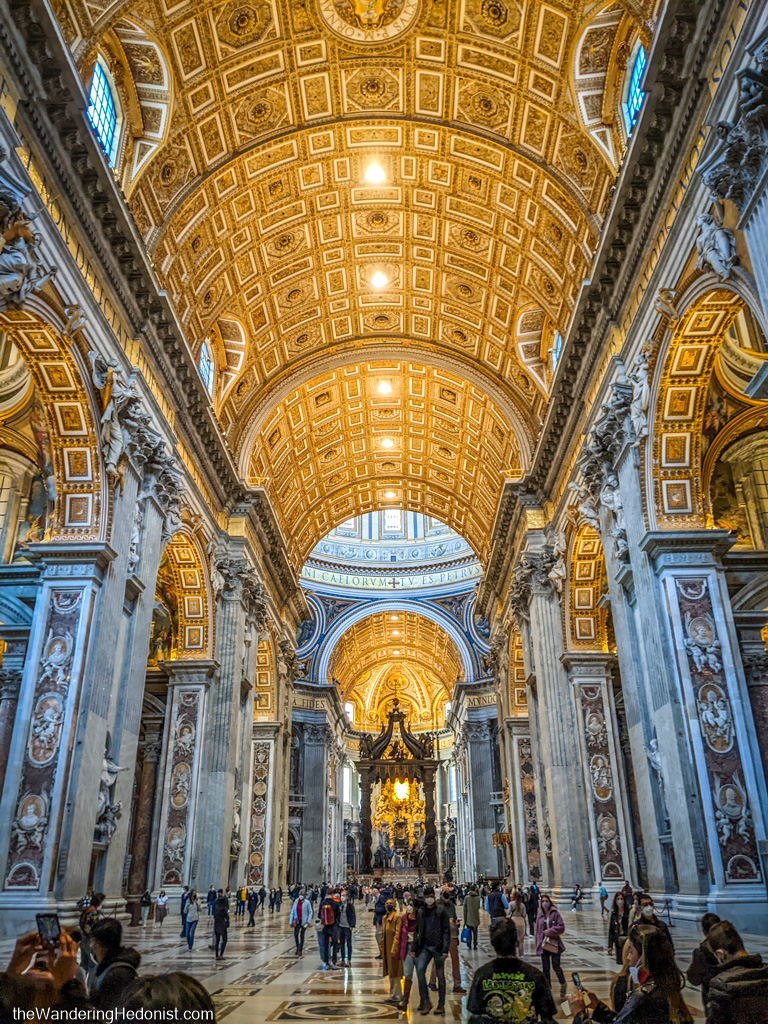
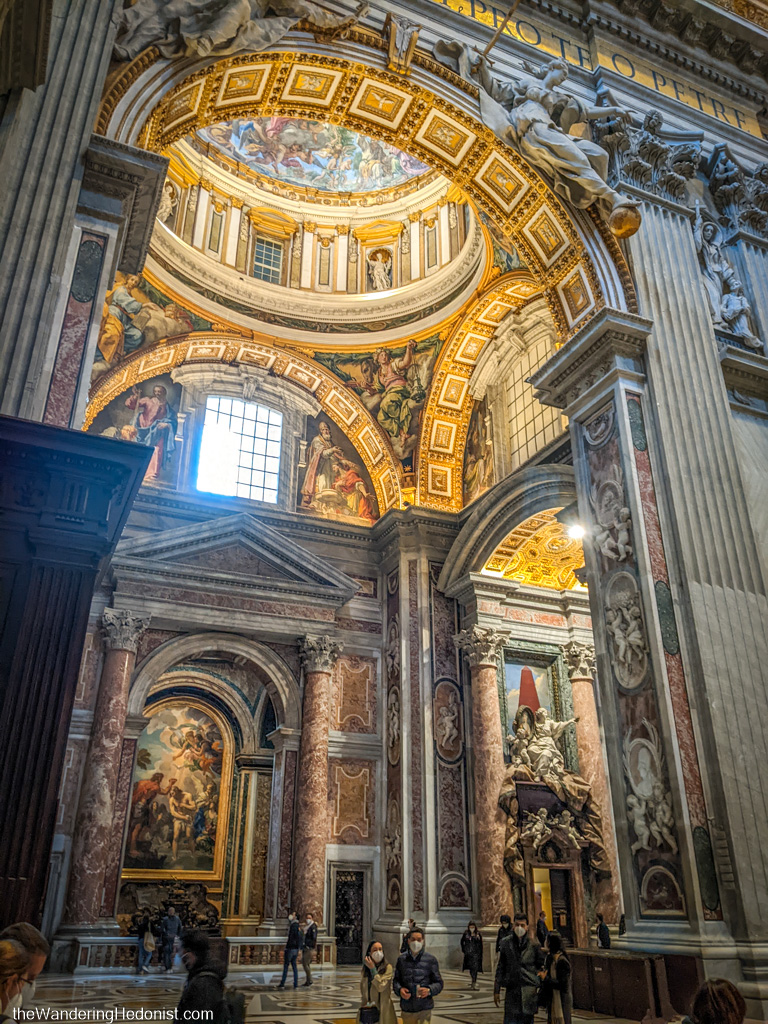
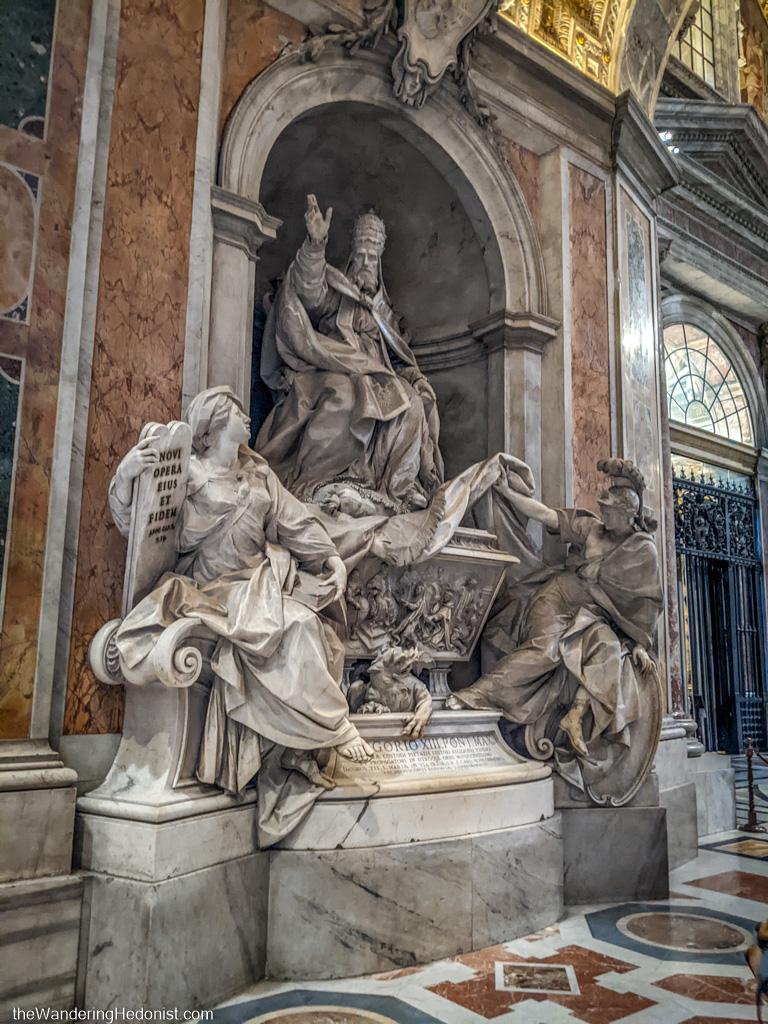
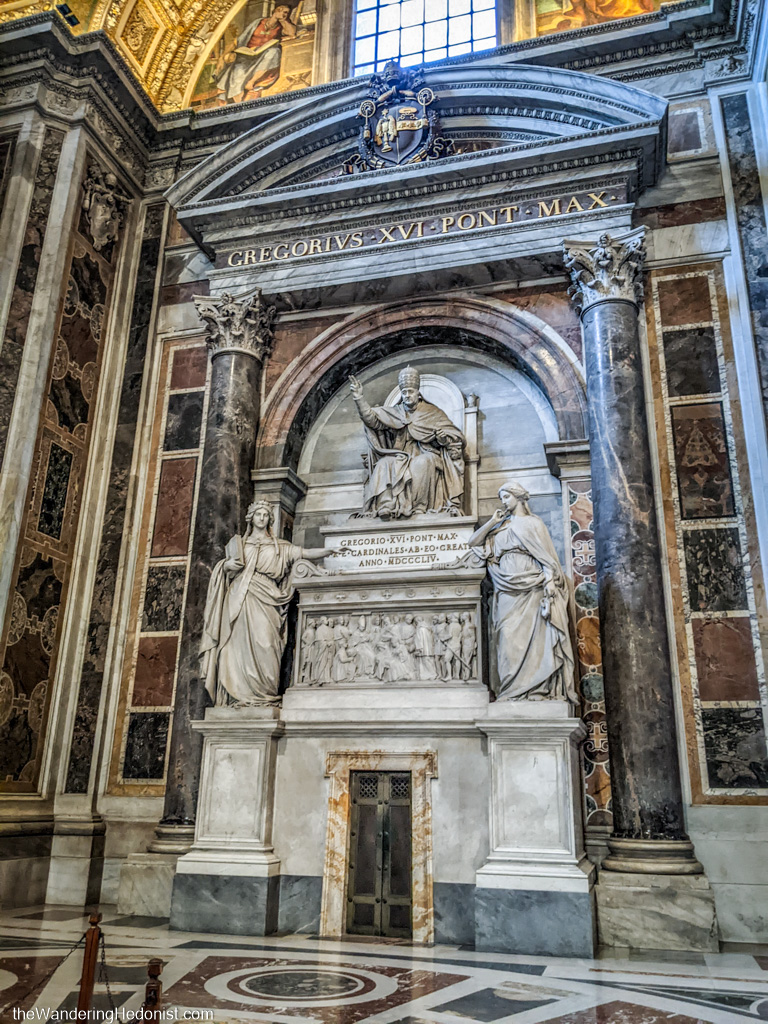
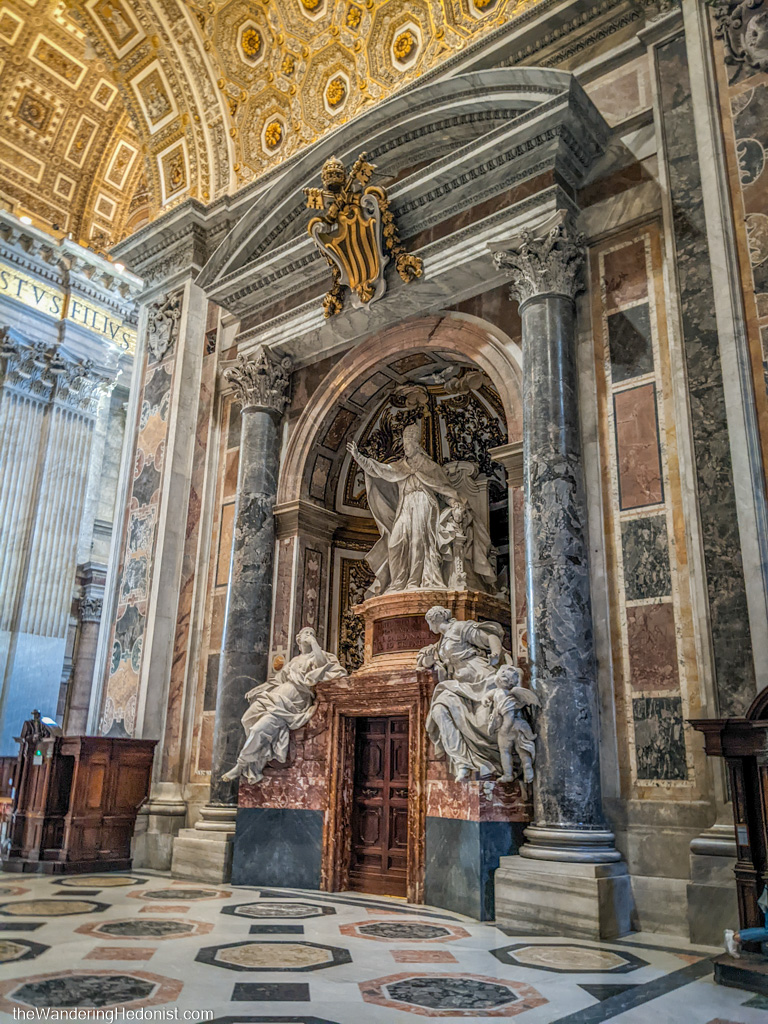
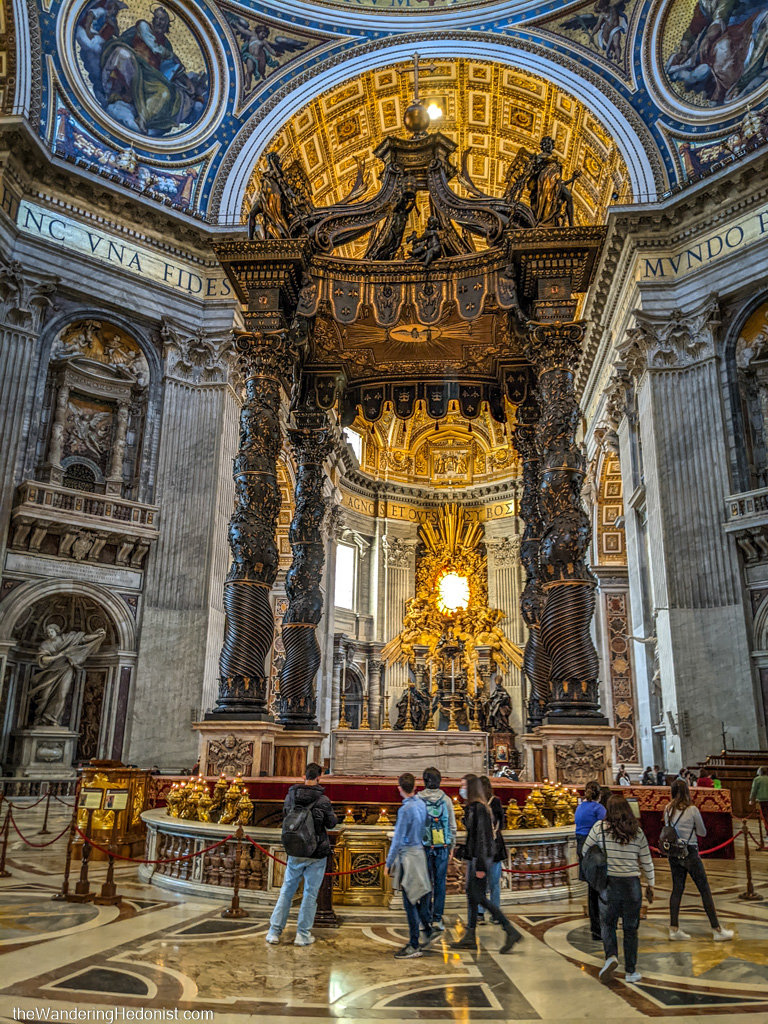
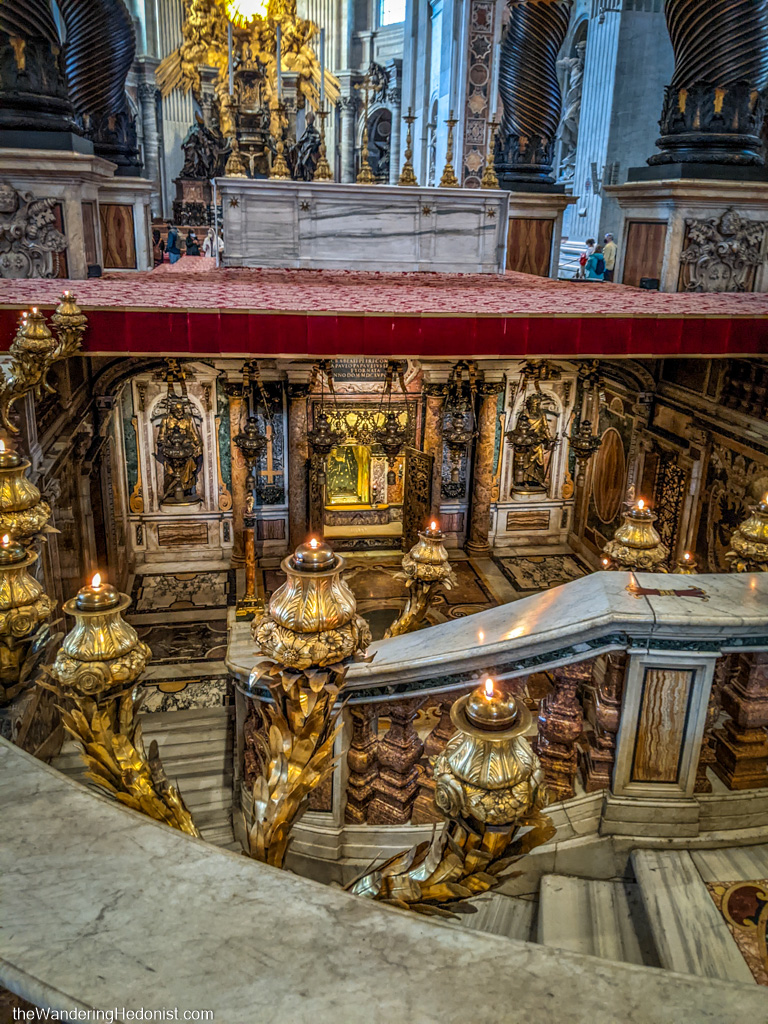
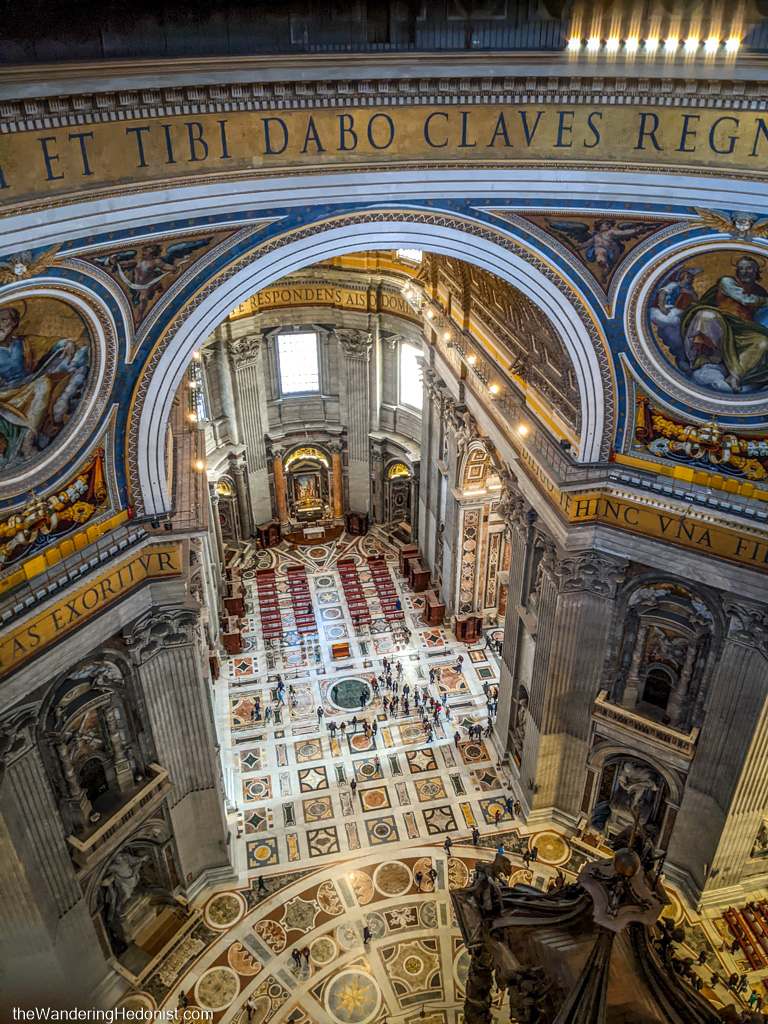
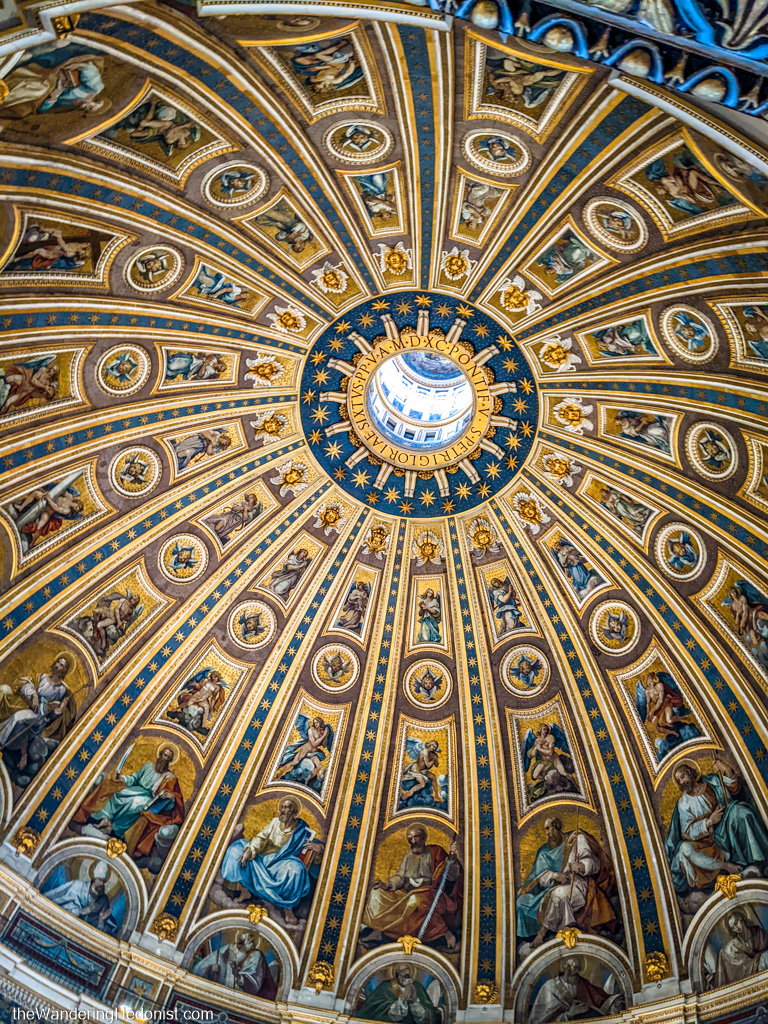
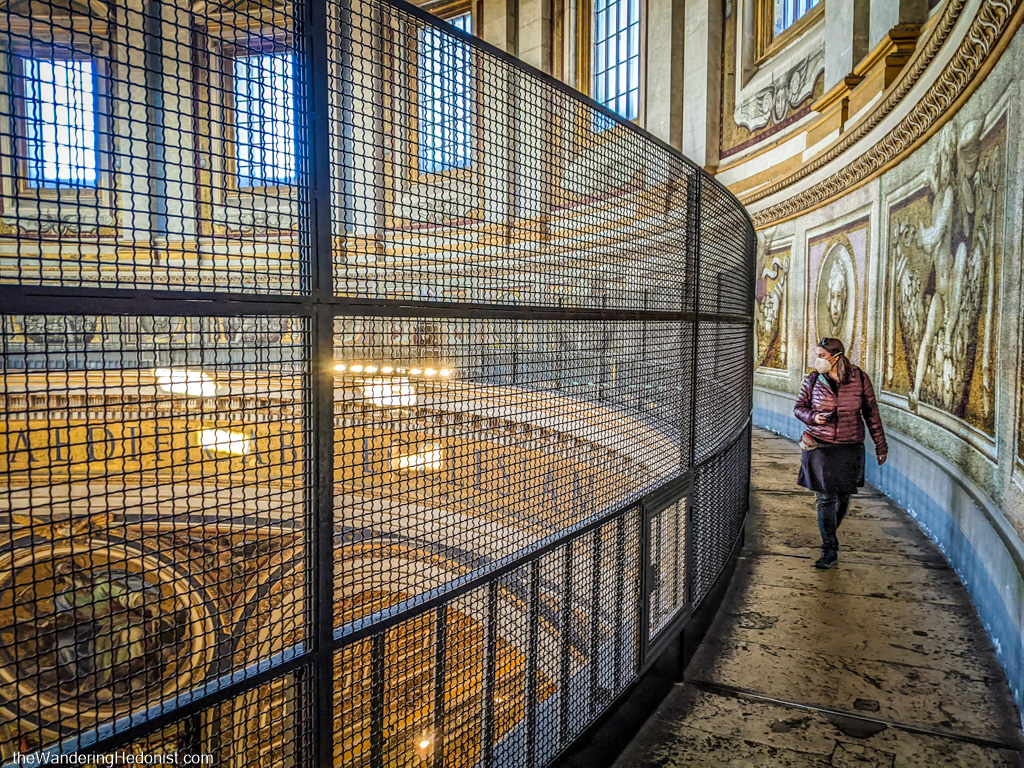
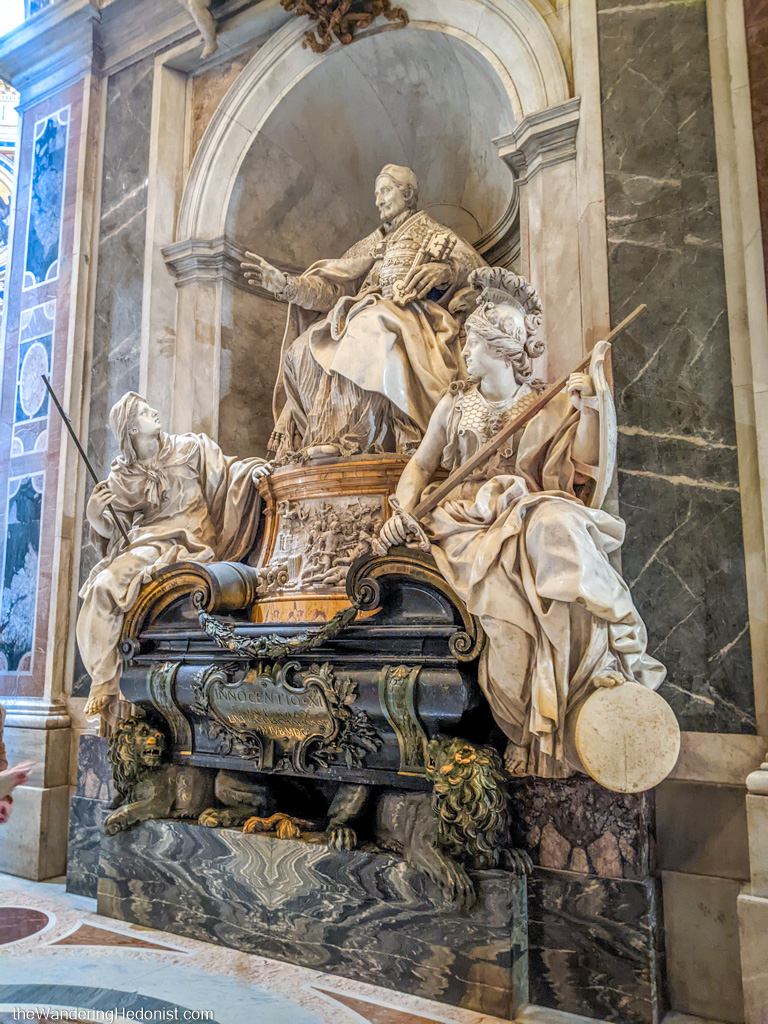
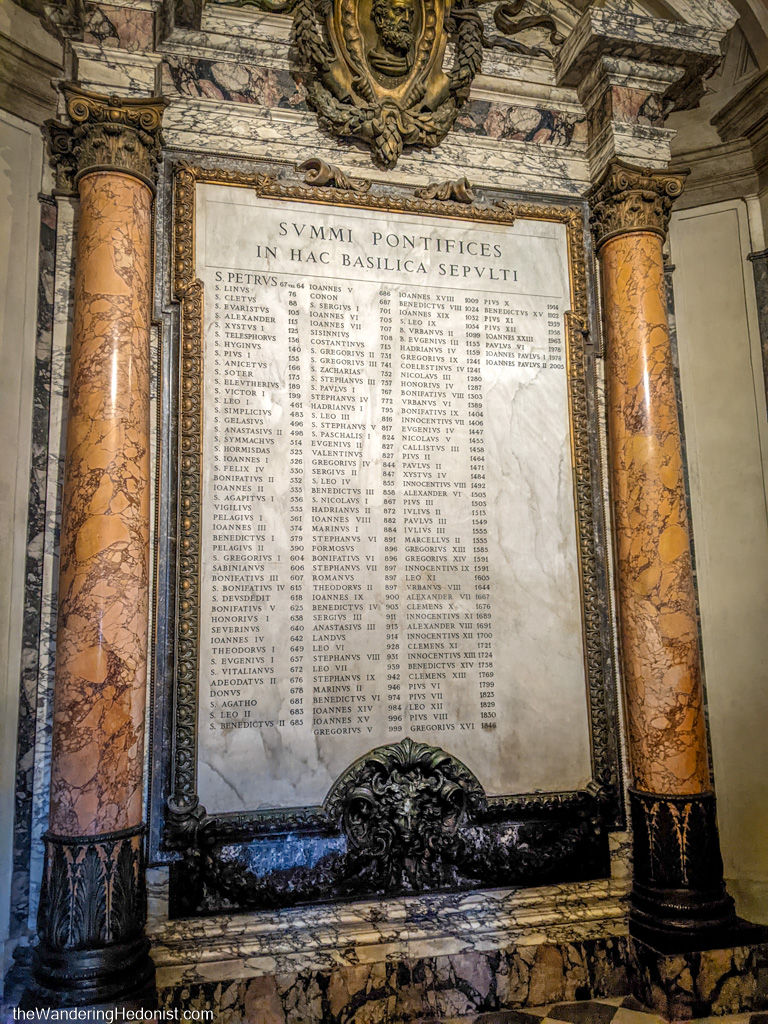
As I was exiting the basilica, I passed through the Door of Good and Evil (Porte du Bien et du Mal), this massive like 20′ door depicting acts of good and evil. I must have been on the evil side because this is all I saw, graphic images of torture and murder towering over me. It leaves an impression.
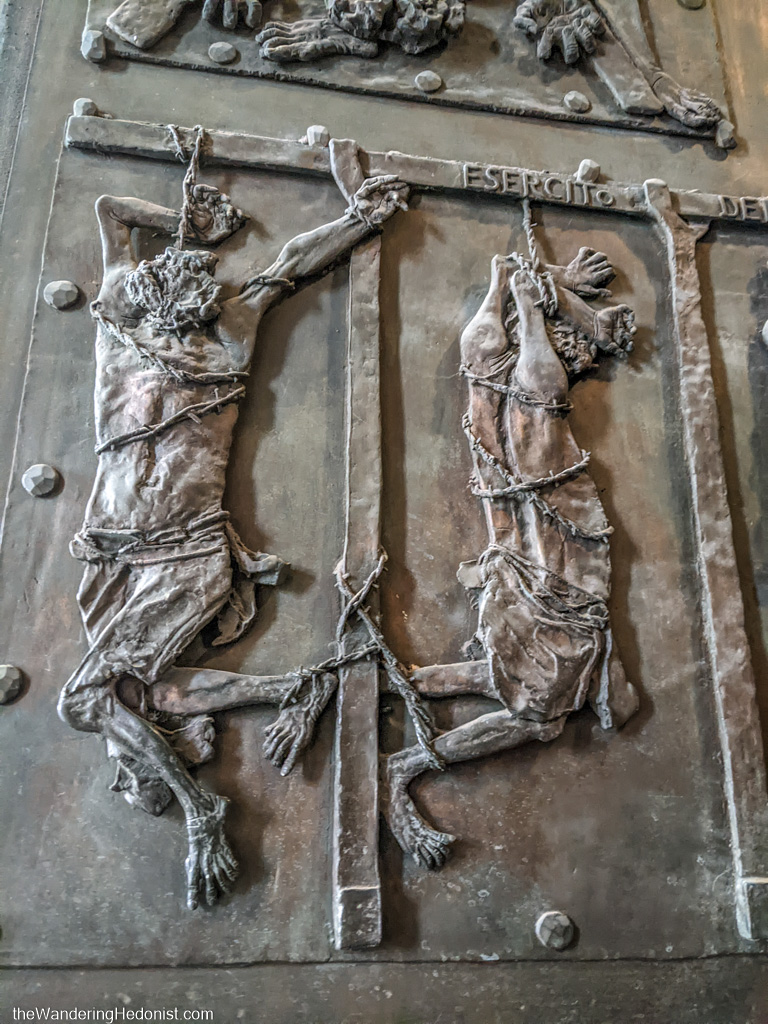
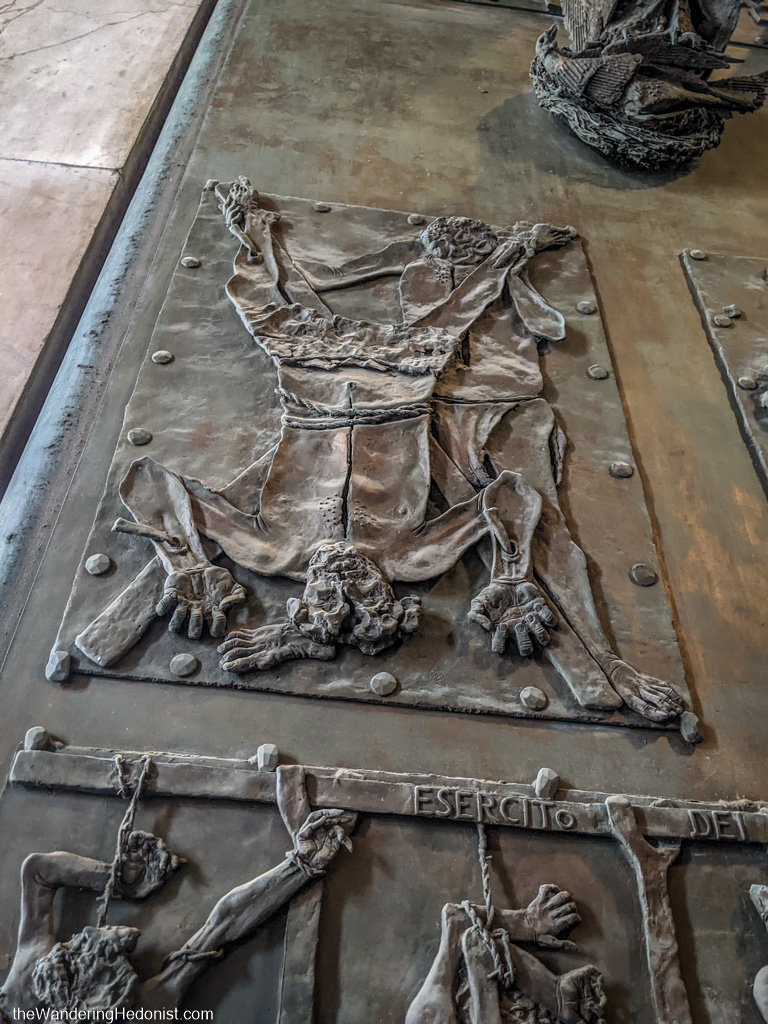
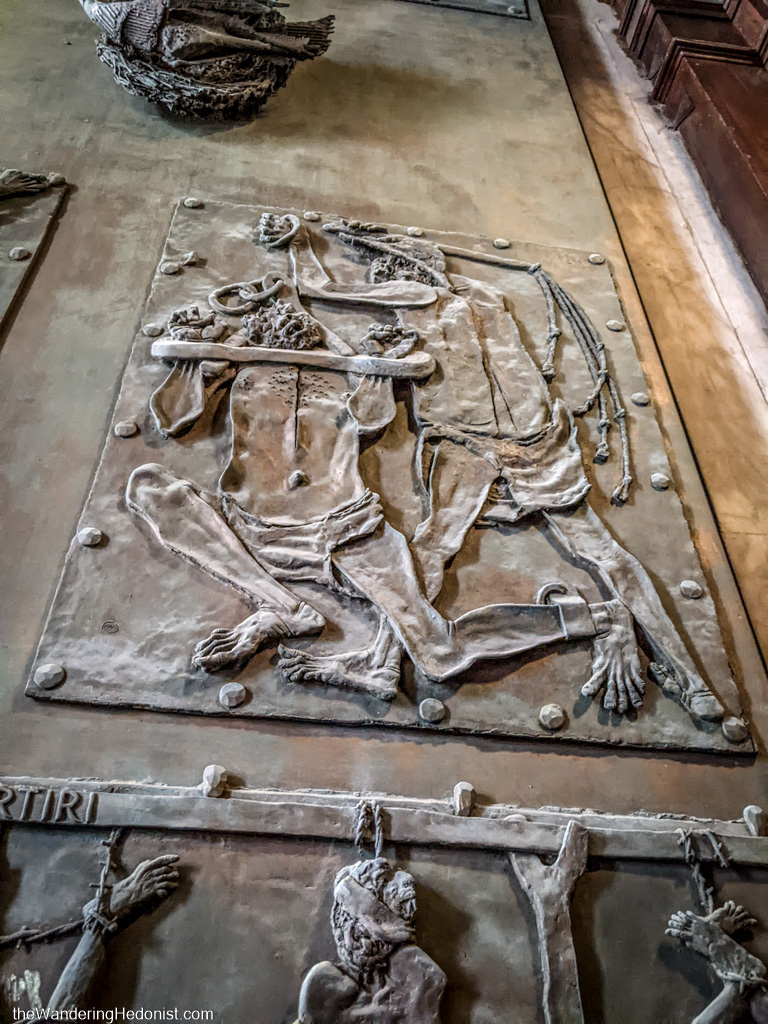
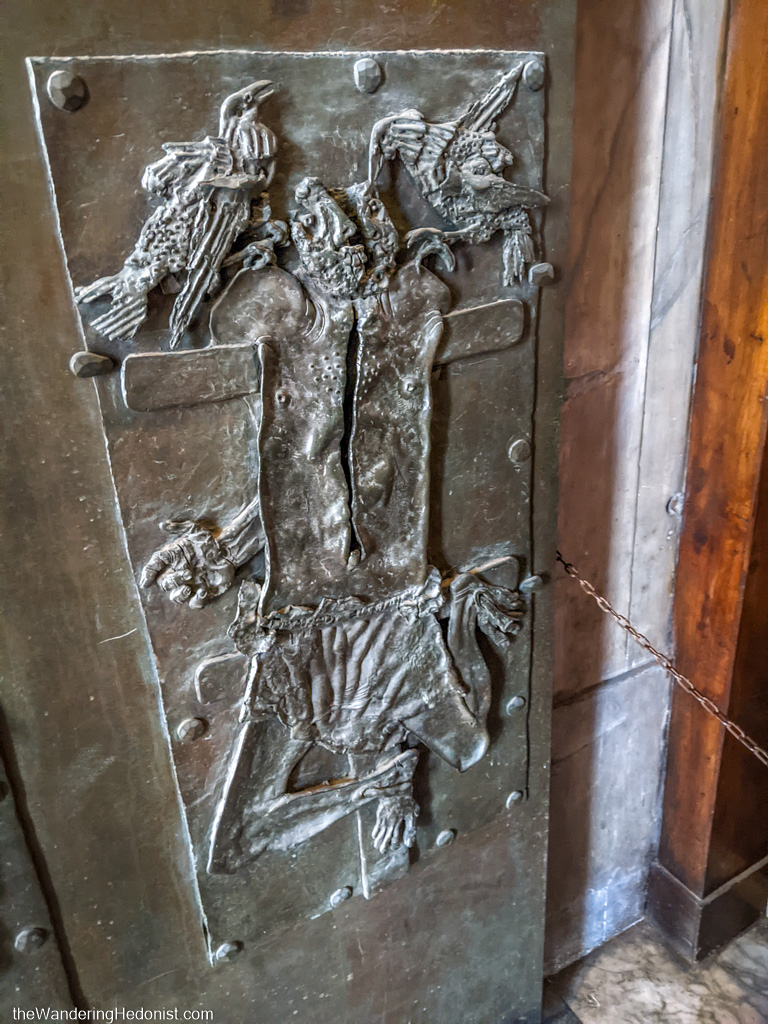
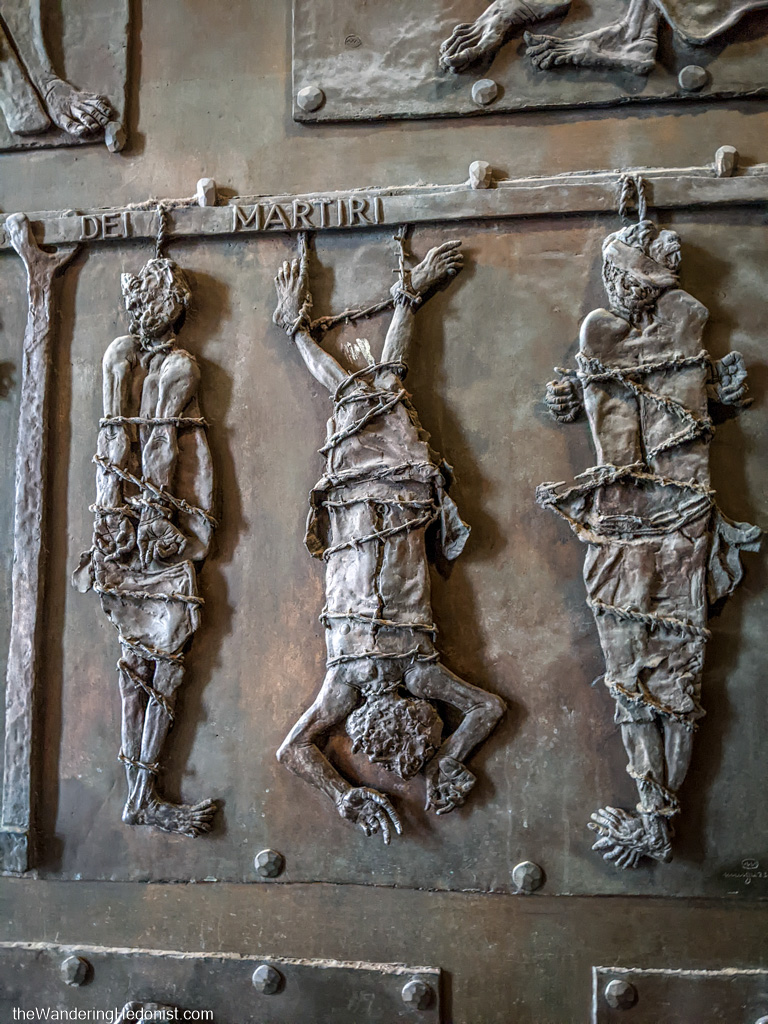

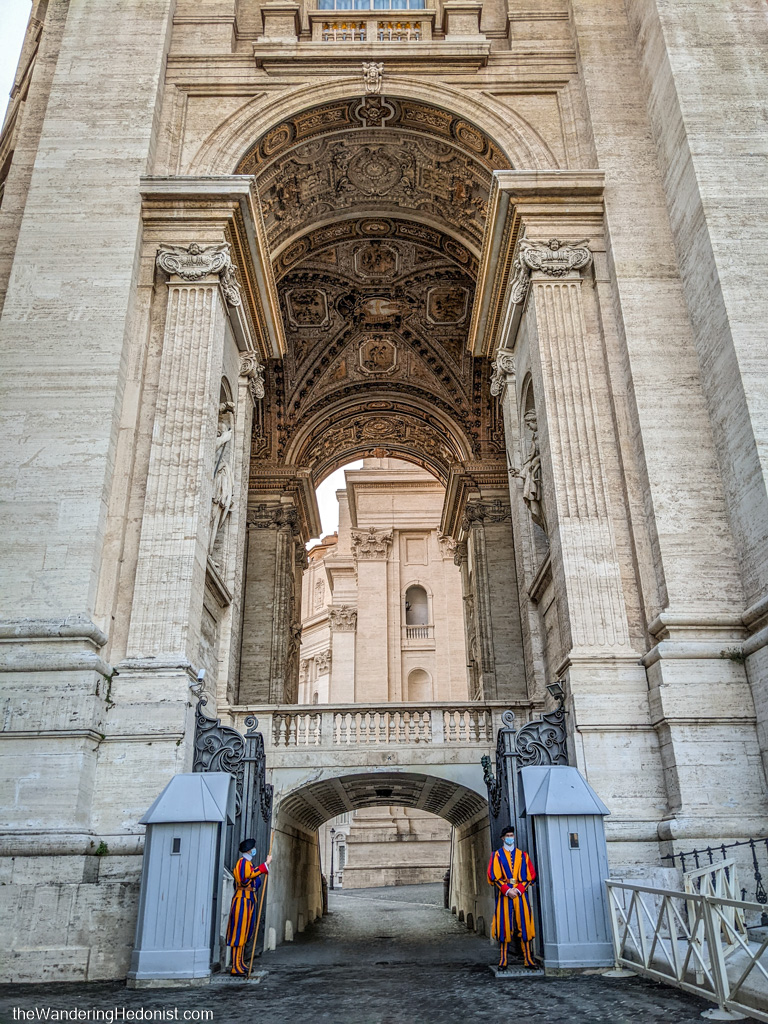

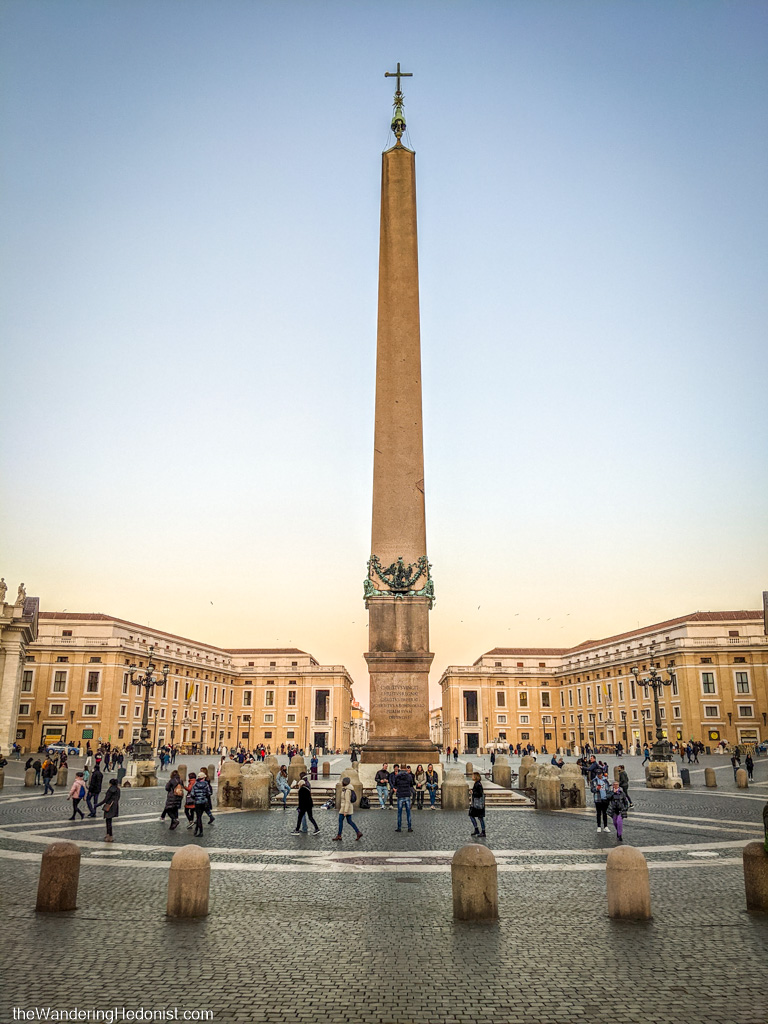
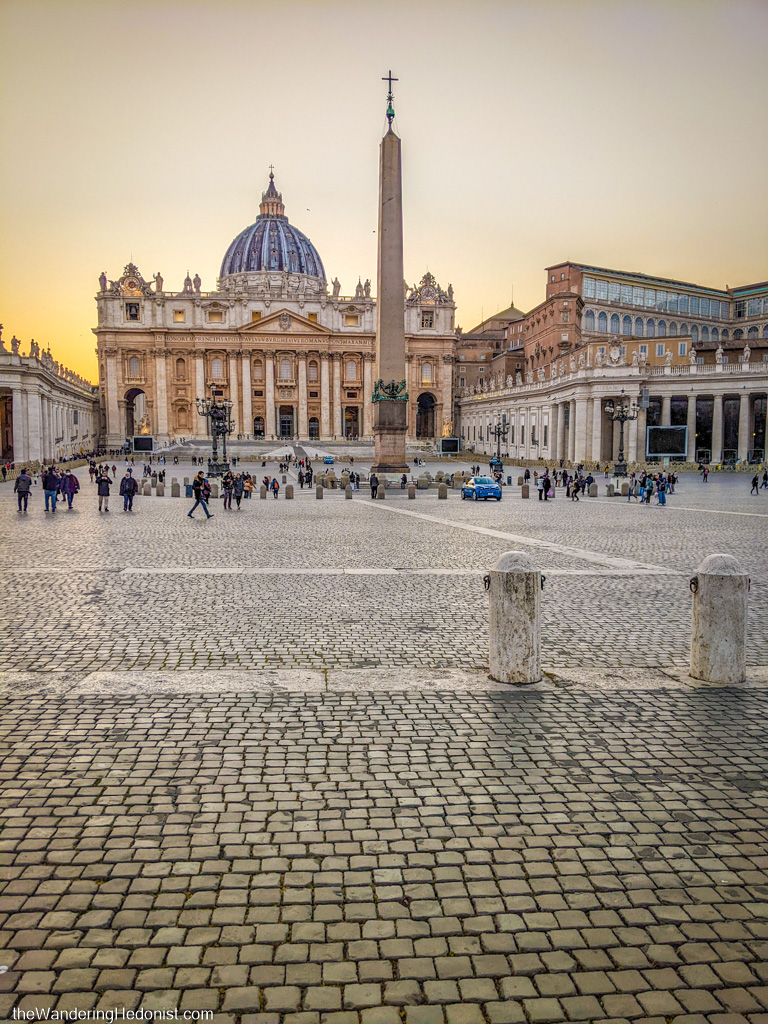





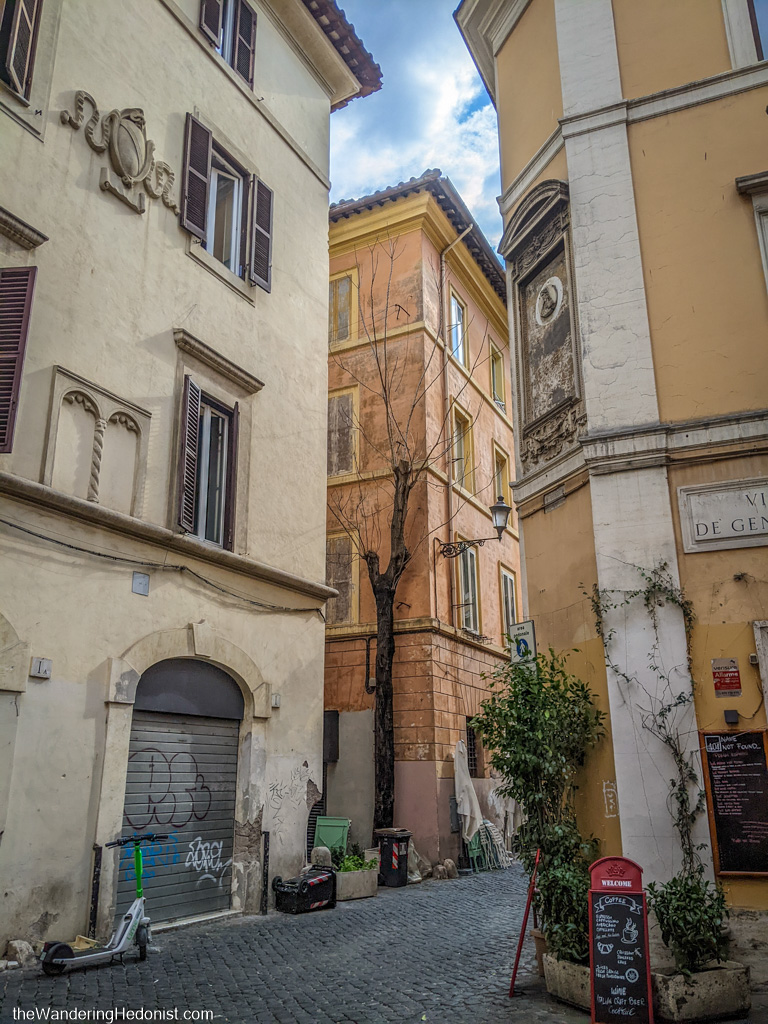
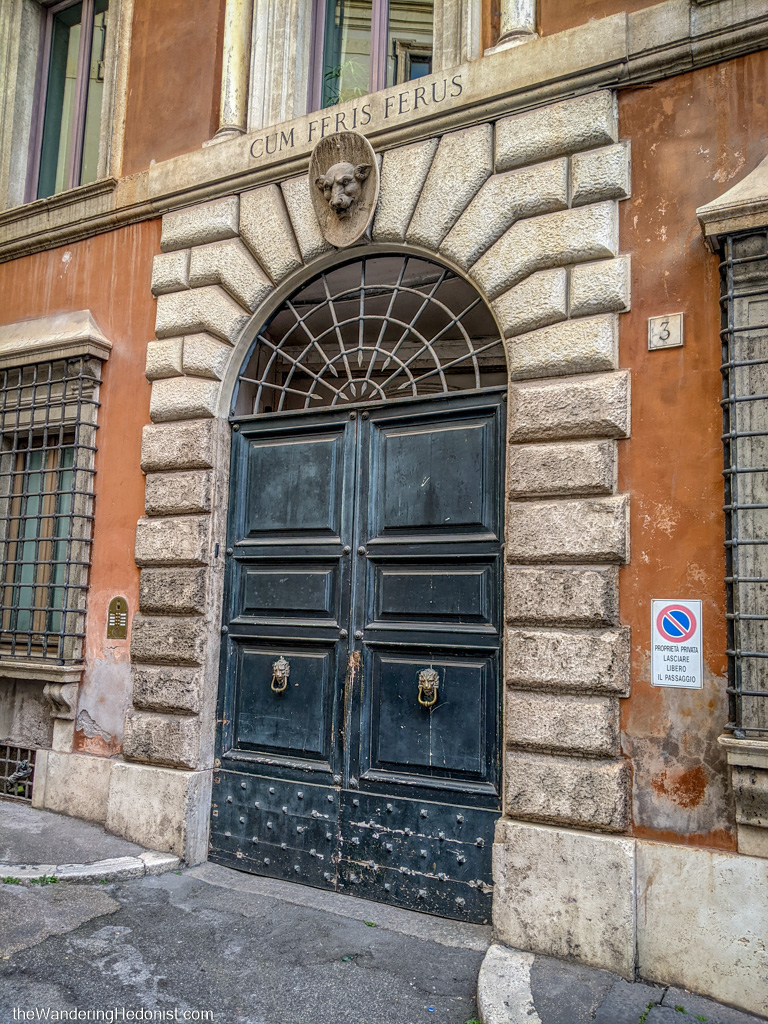
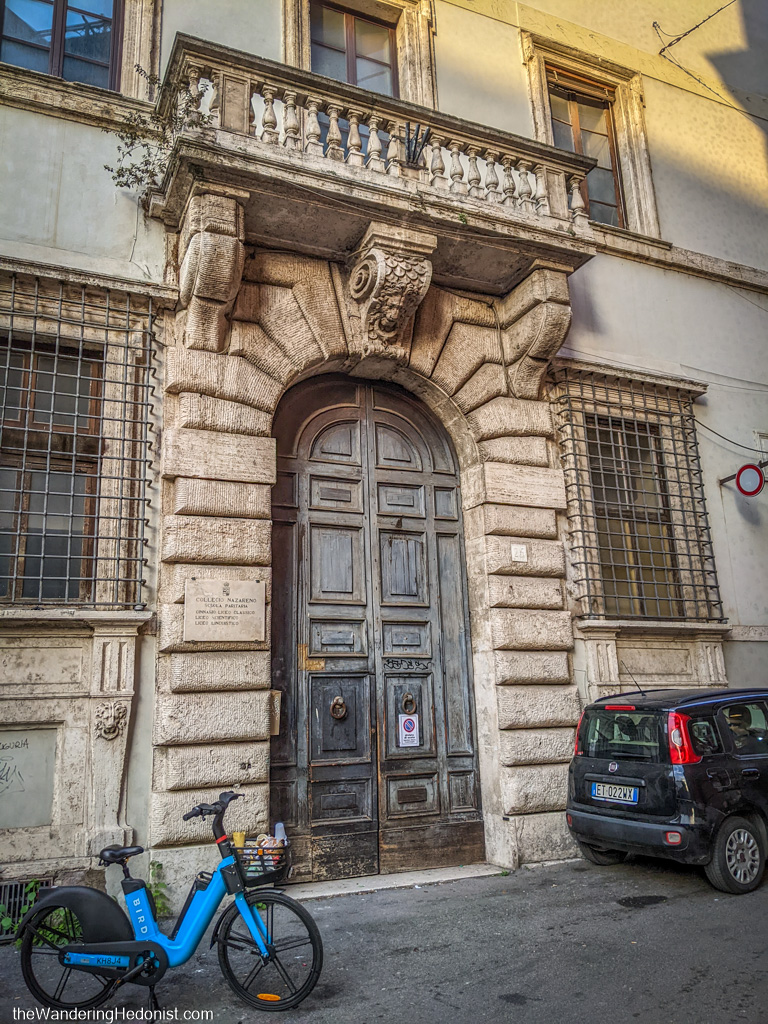
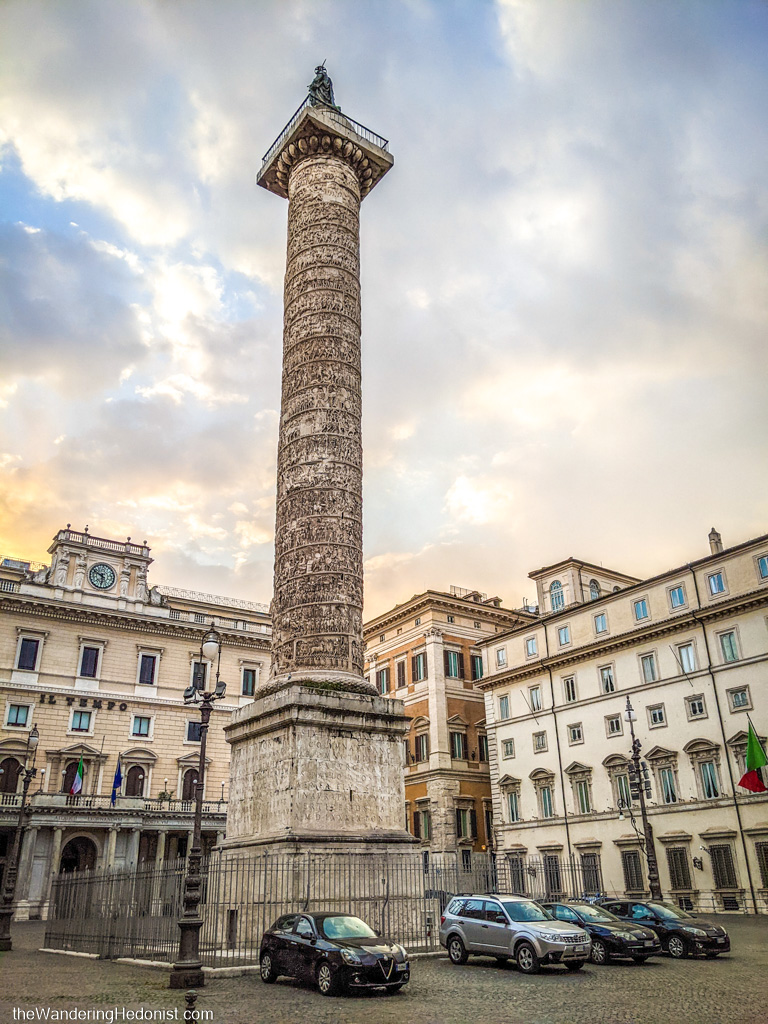
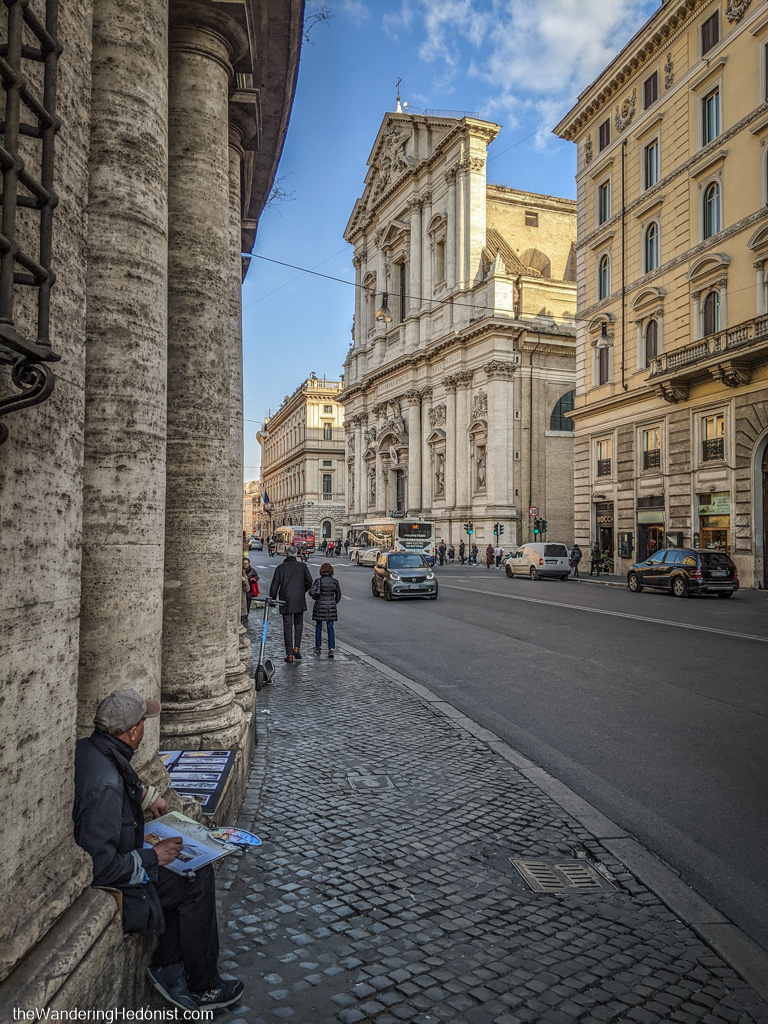
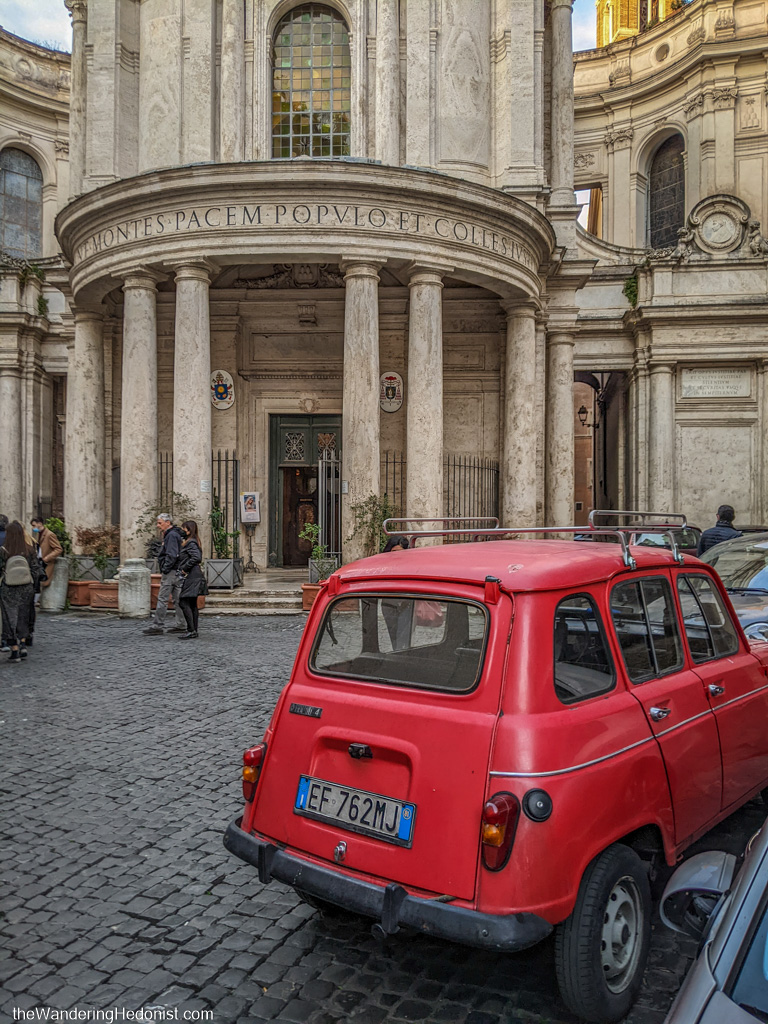
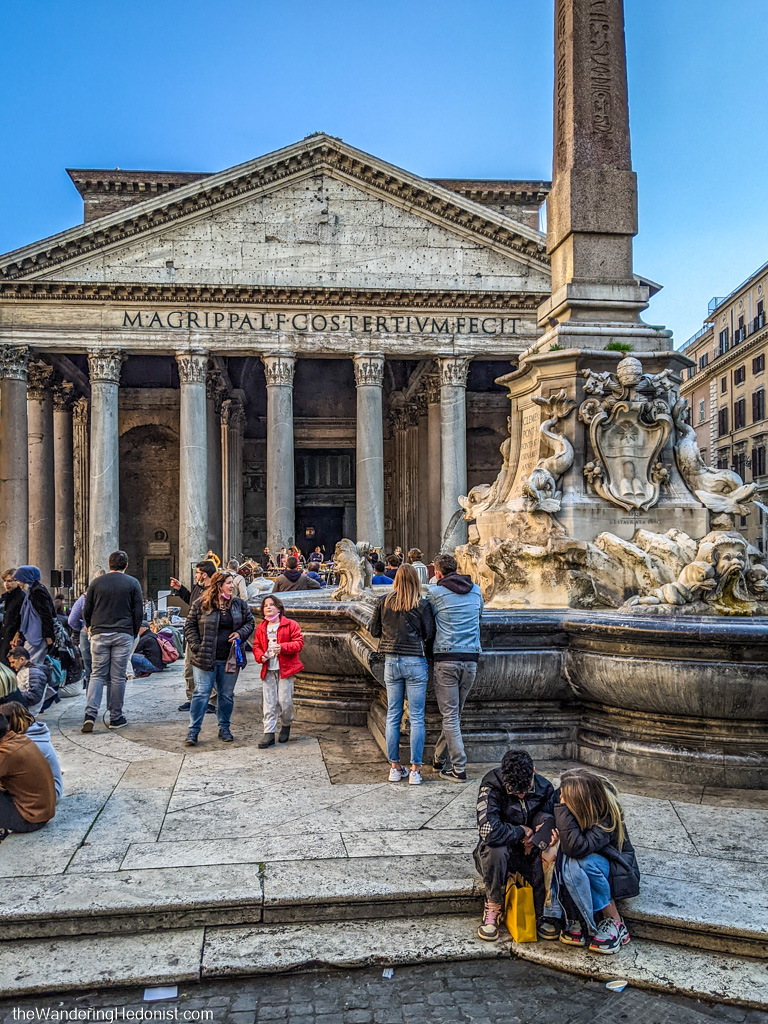
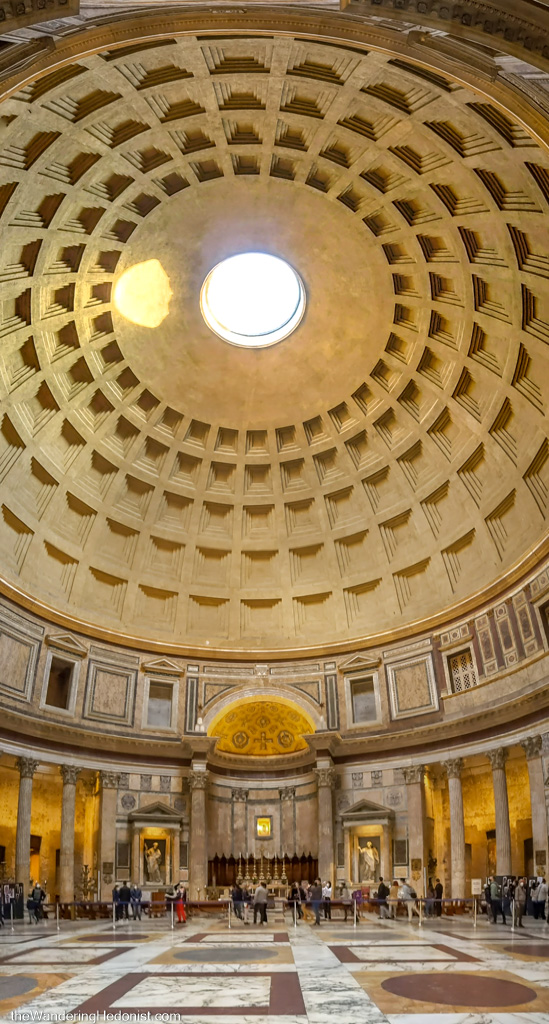
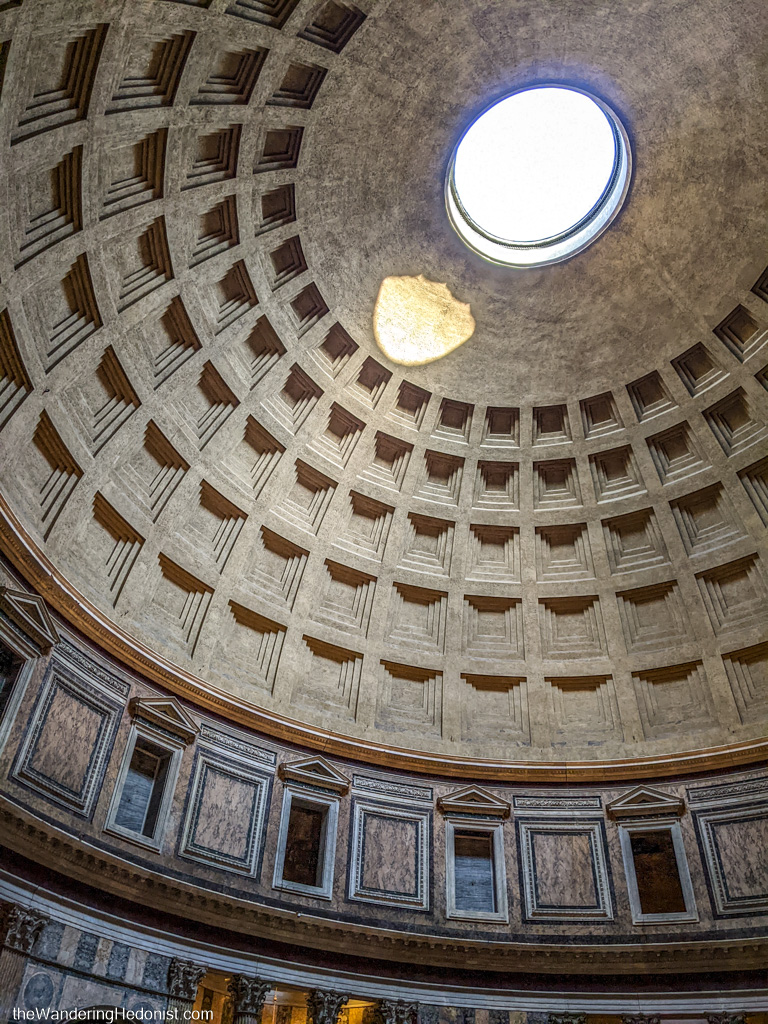

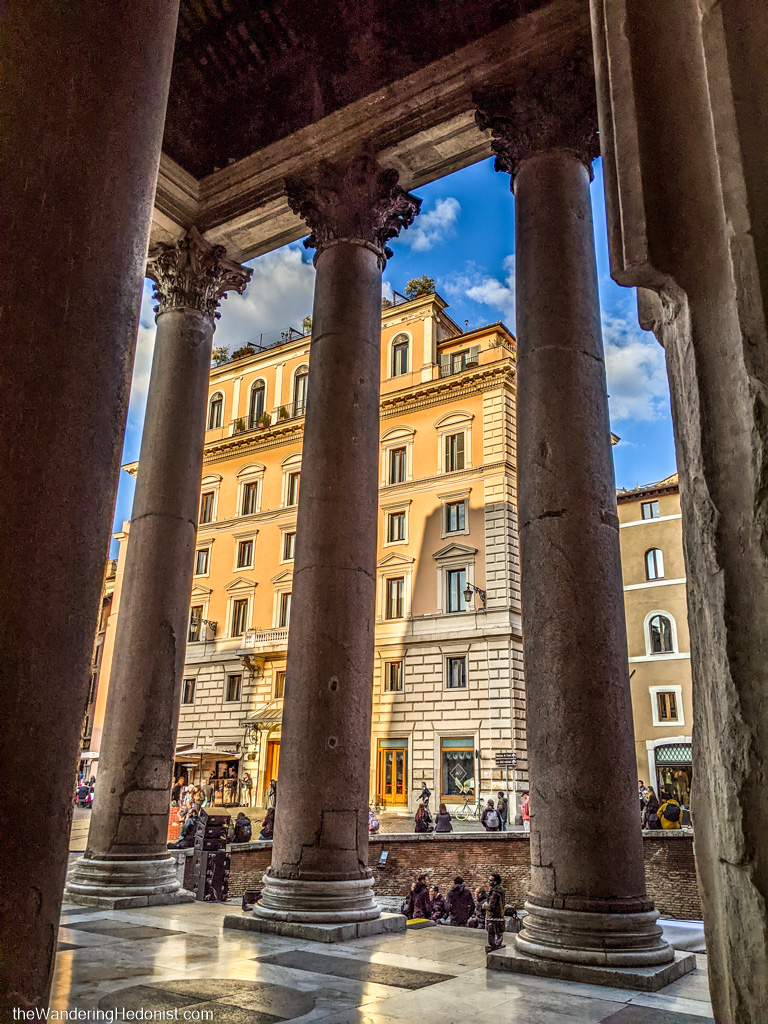
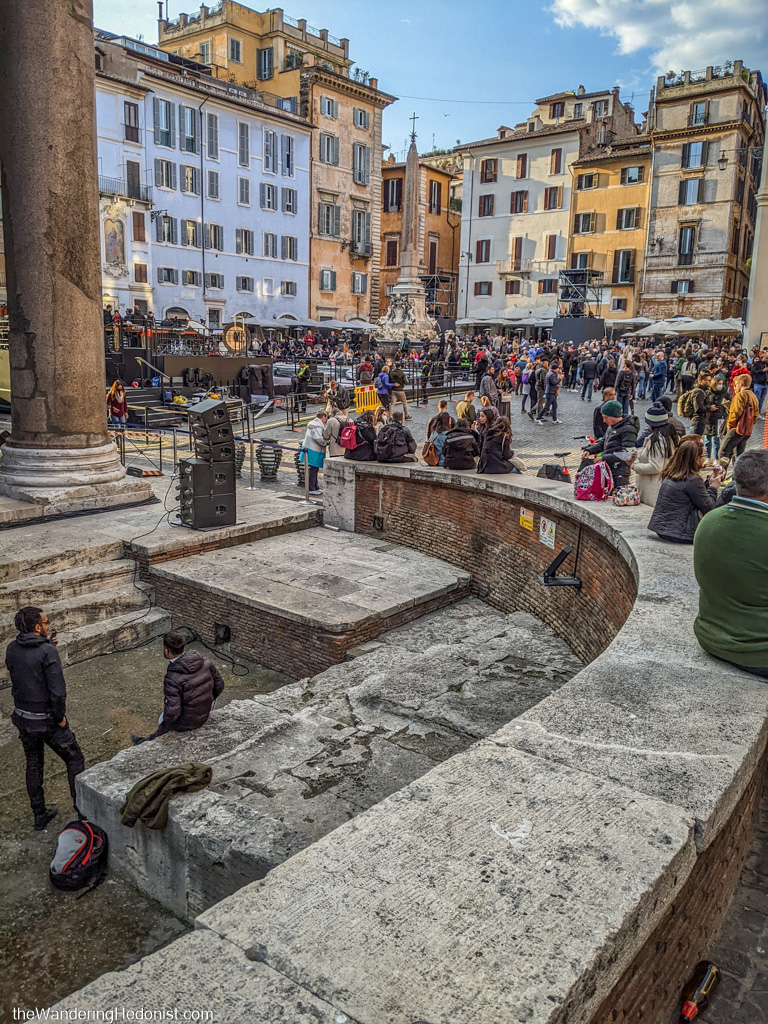
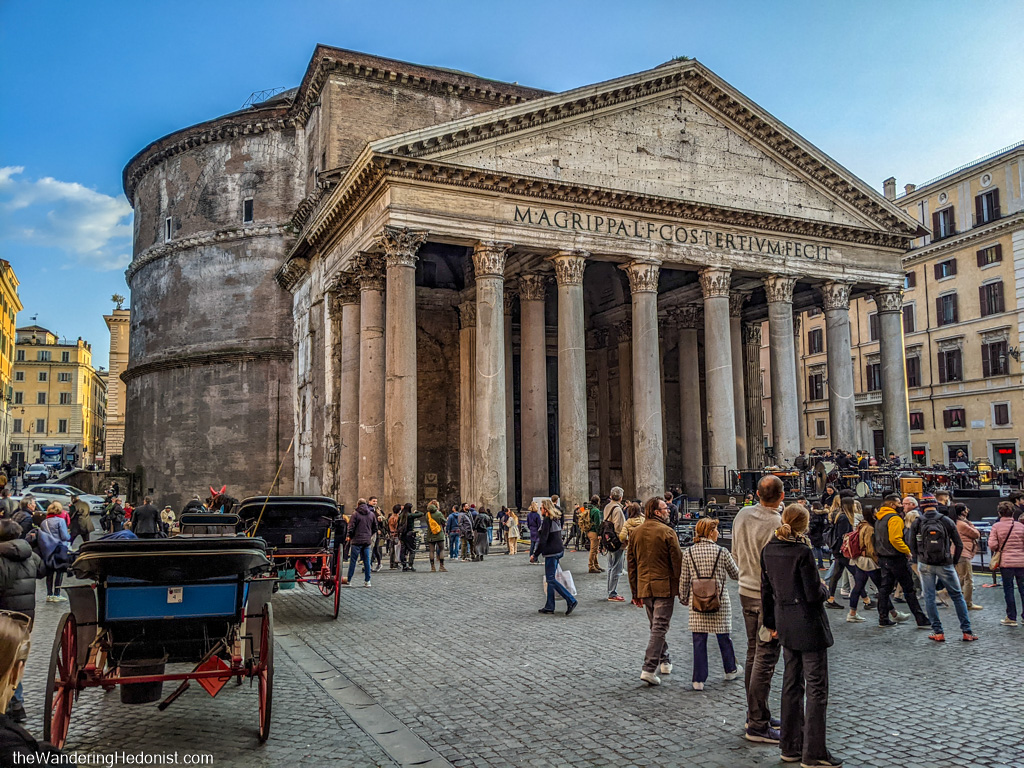
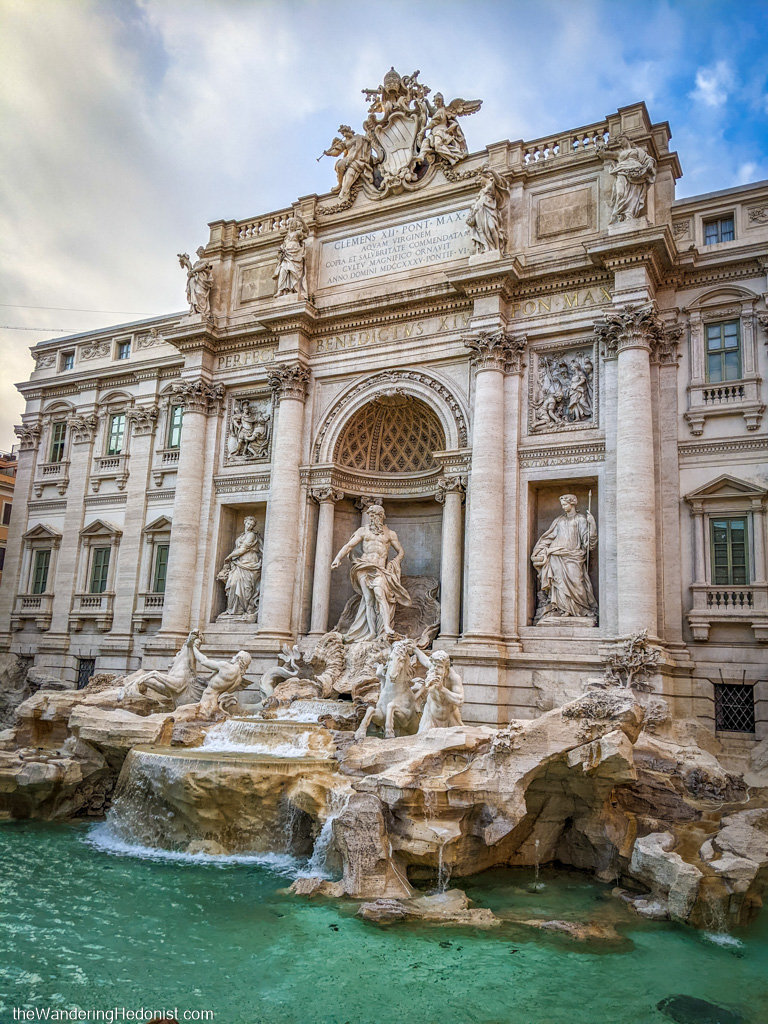
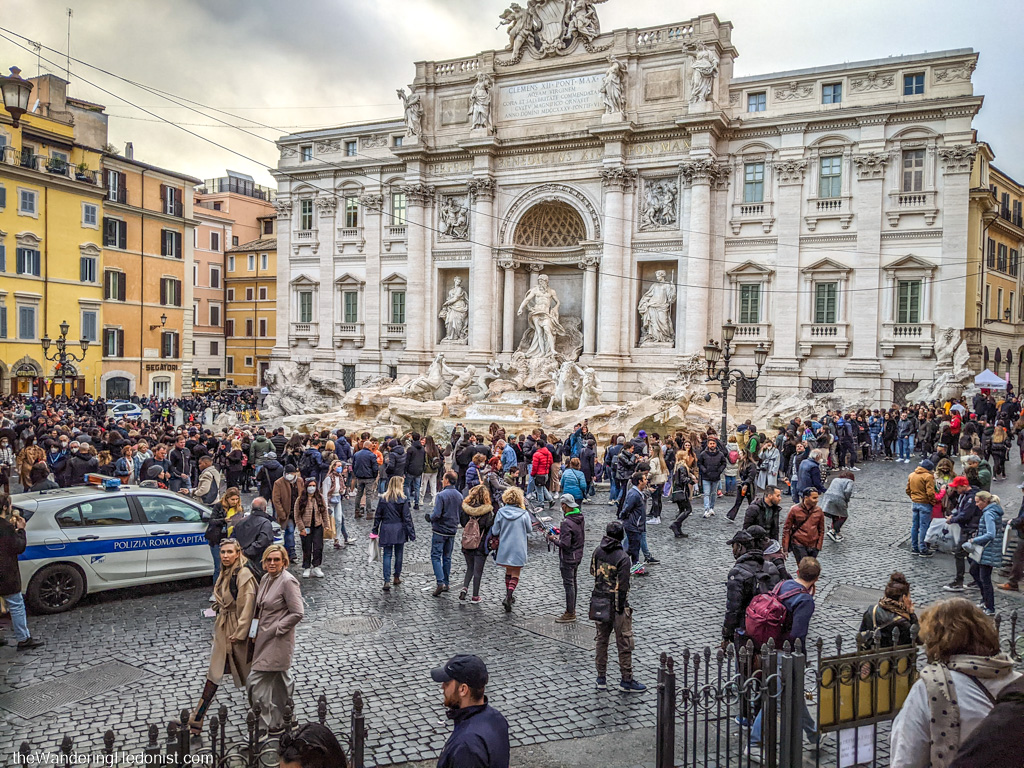
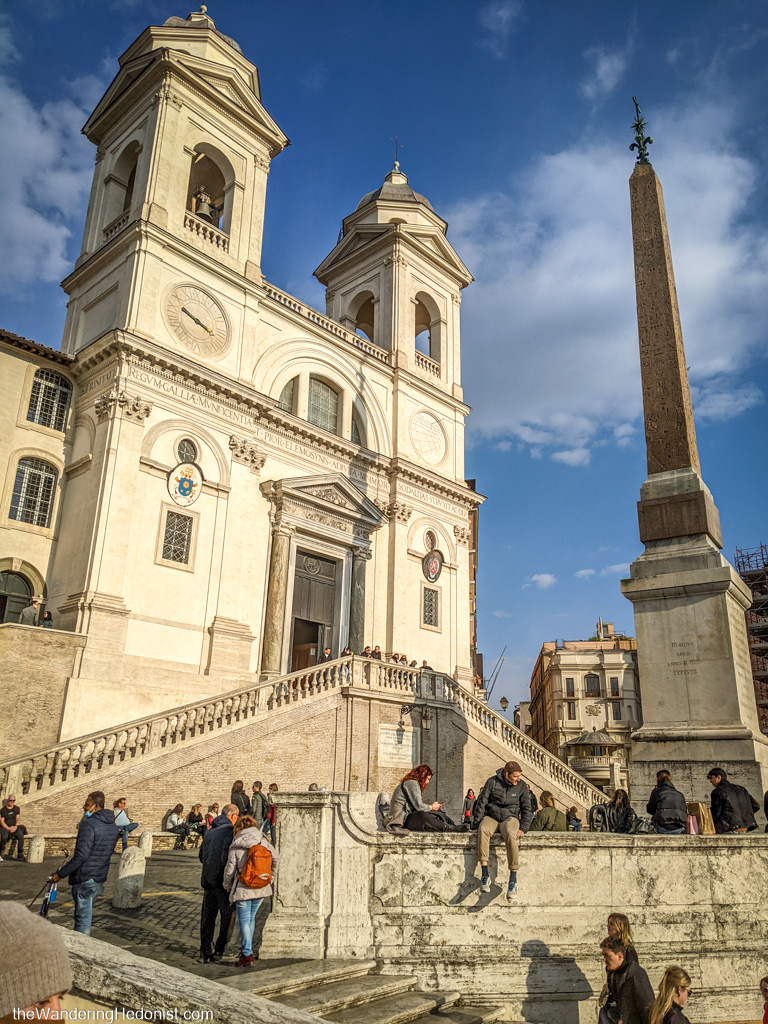
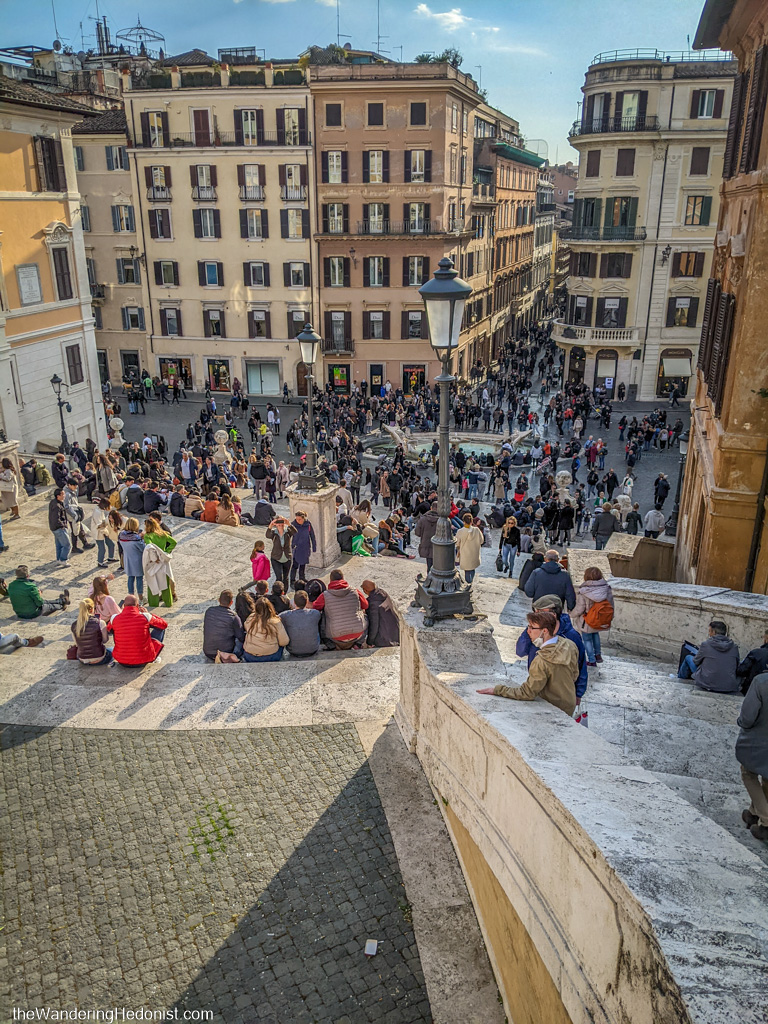
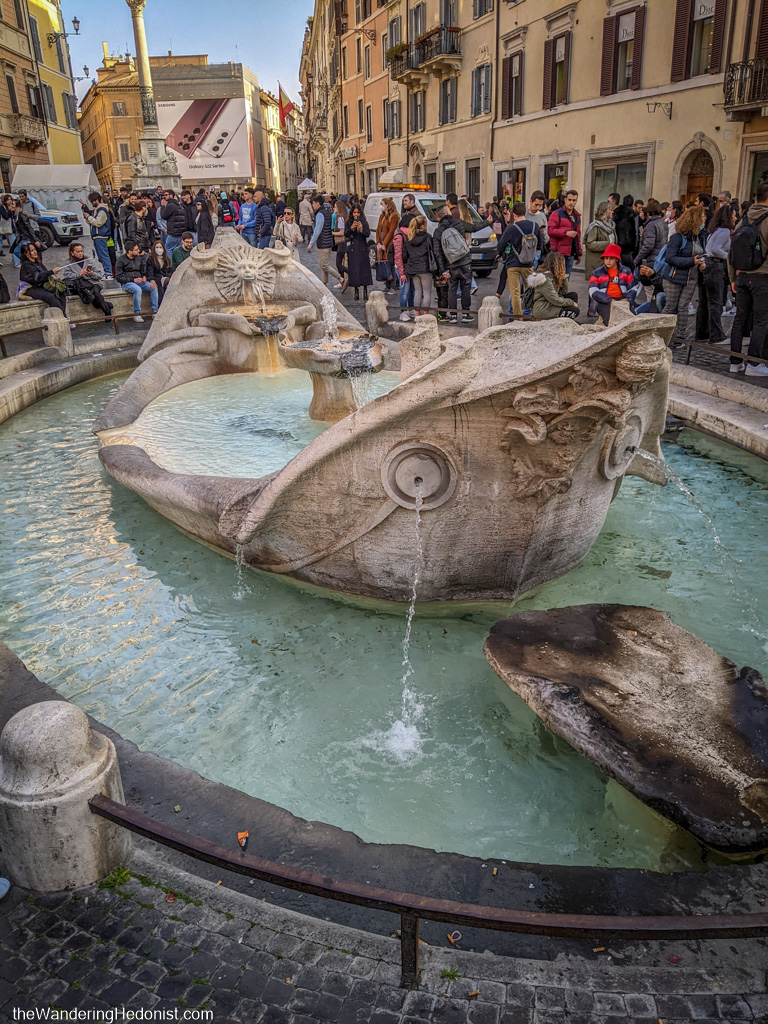

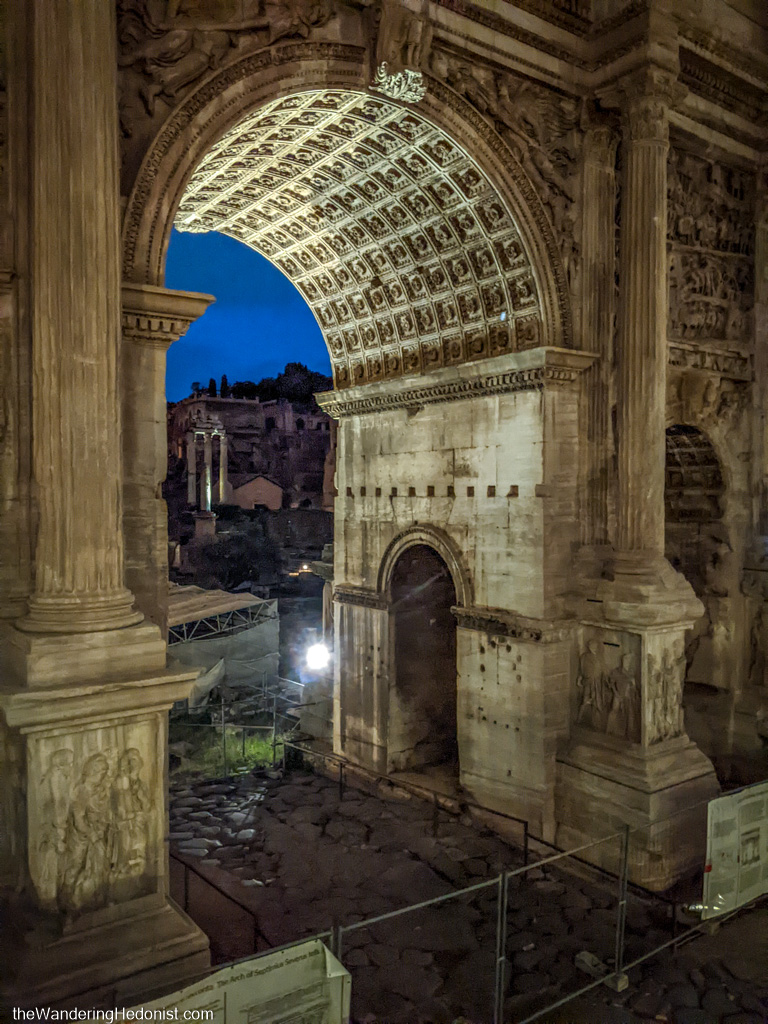
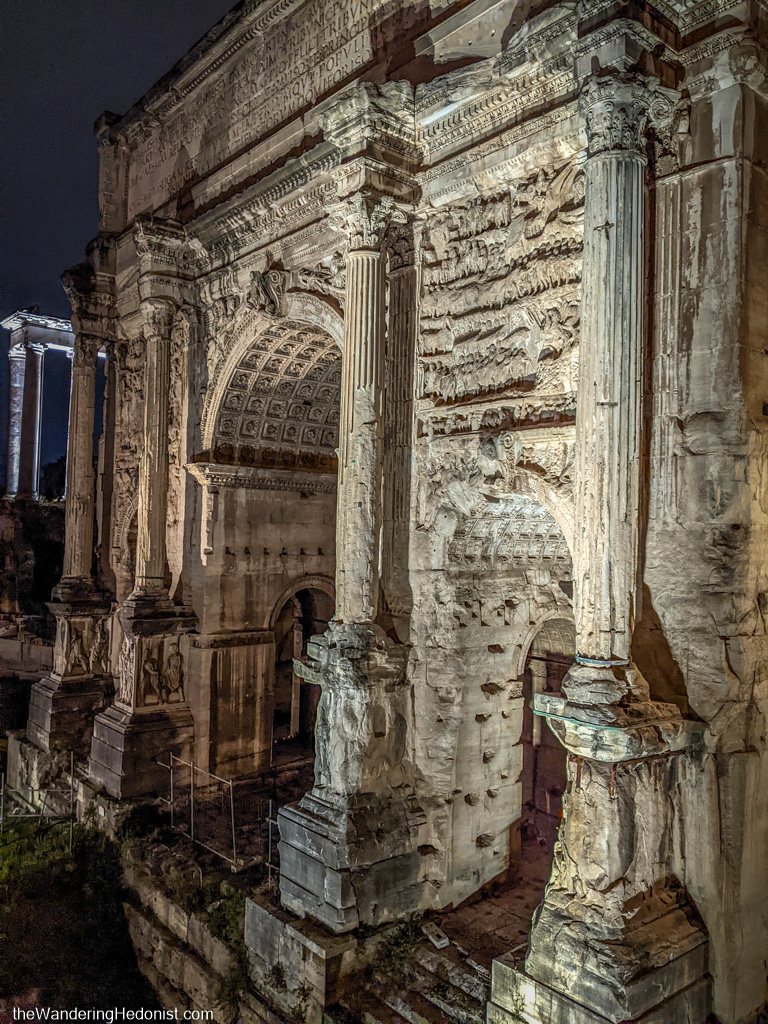

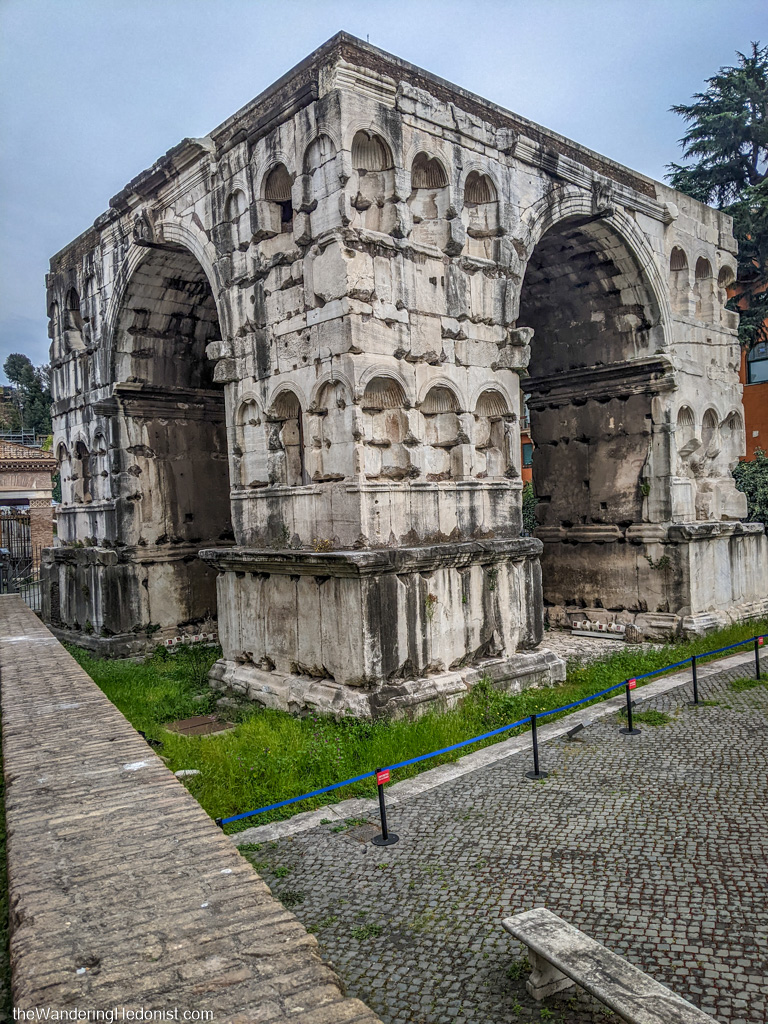
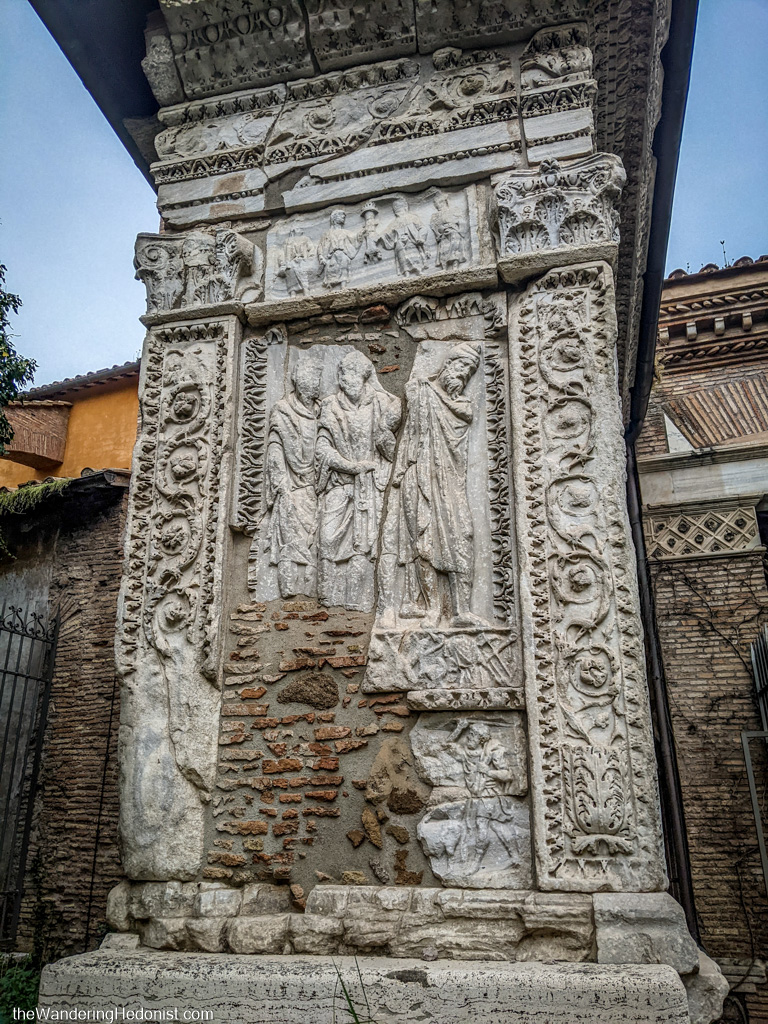


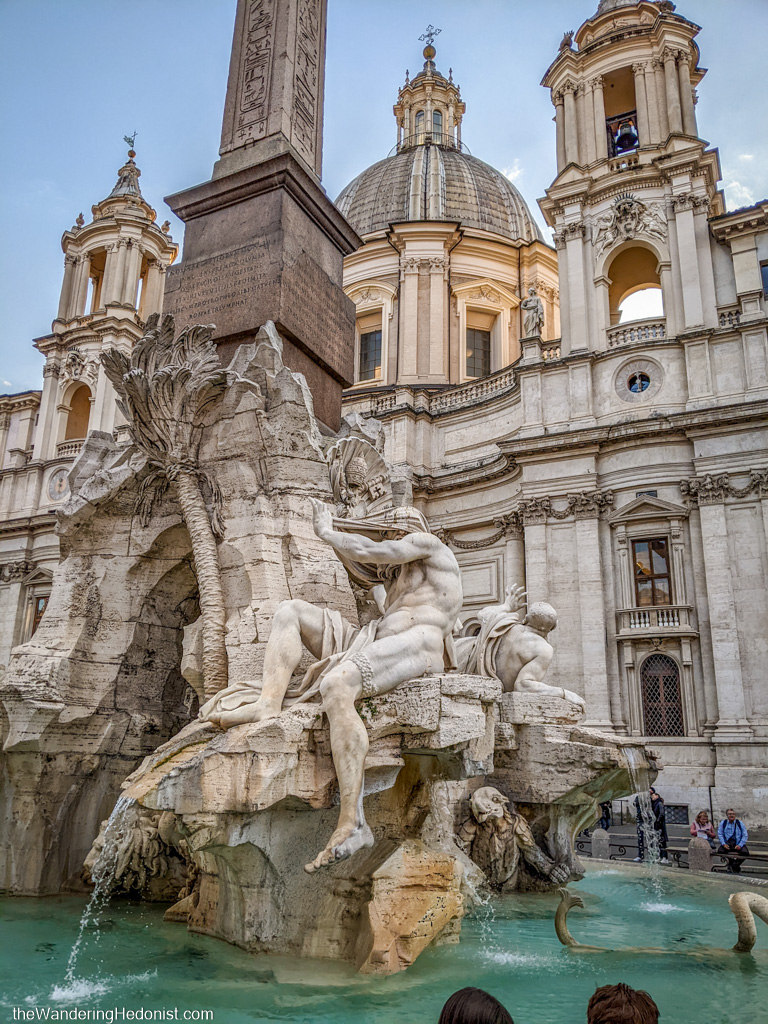
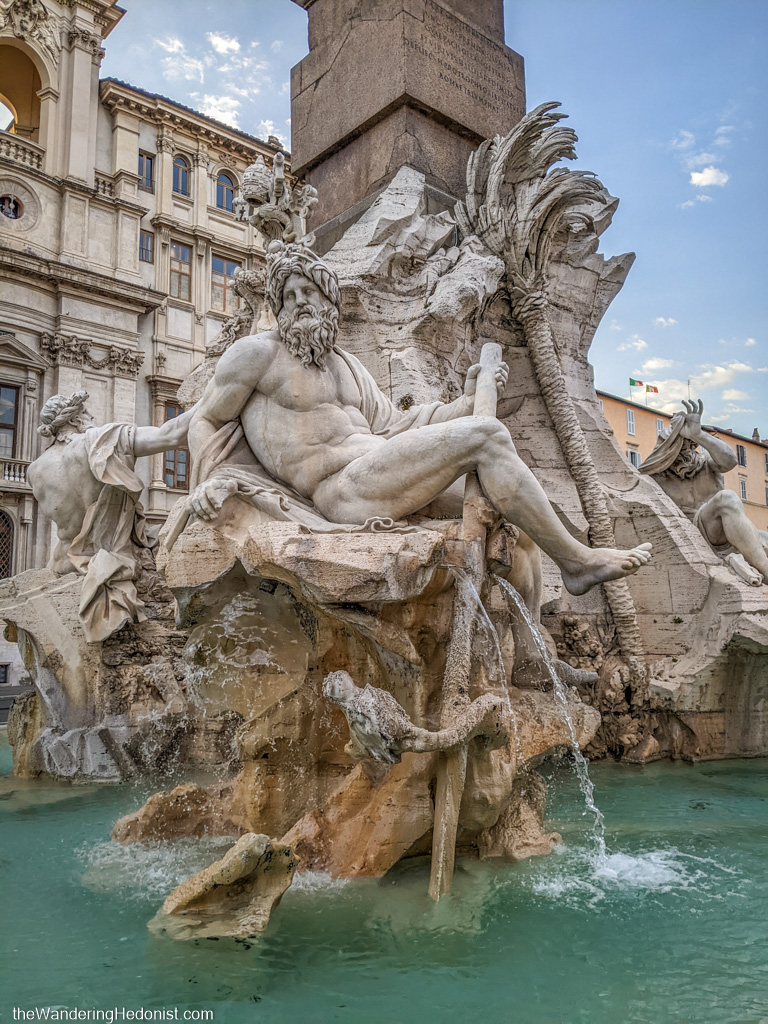








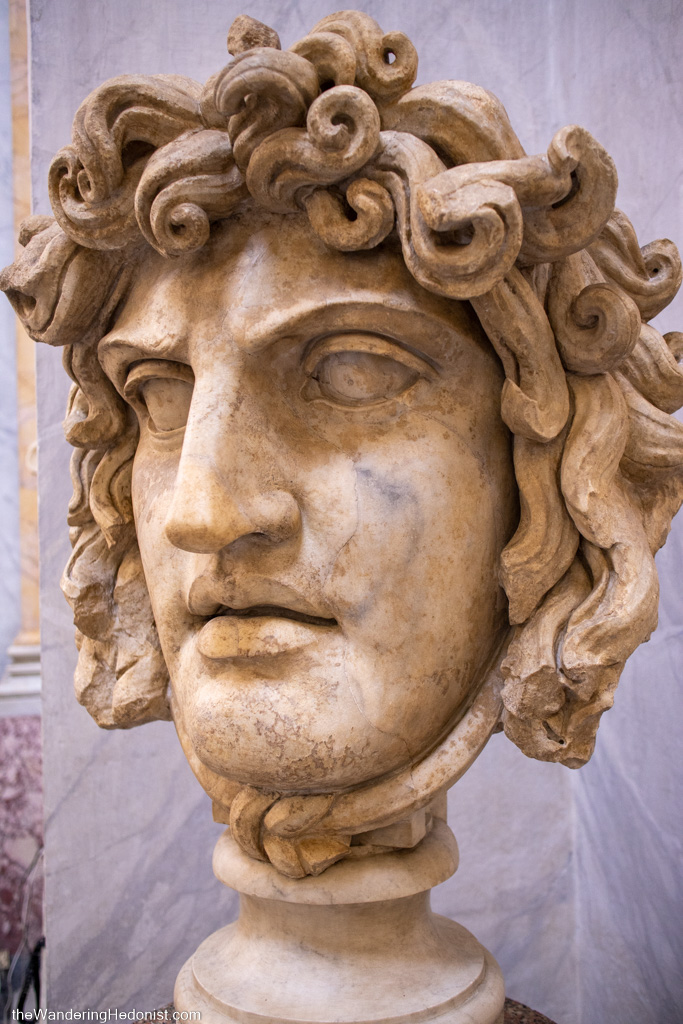







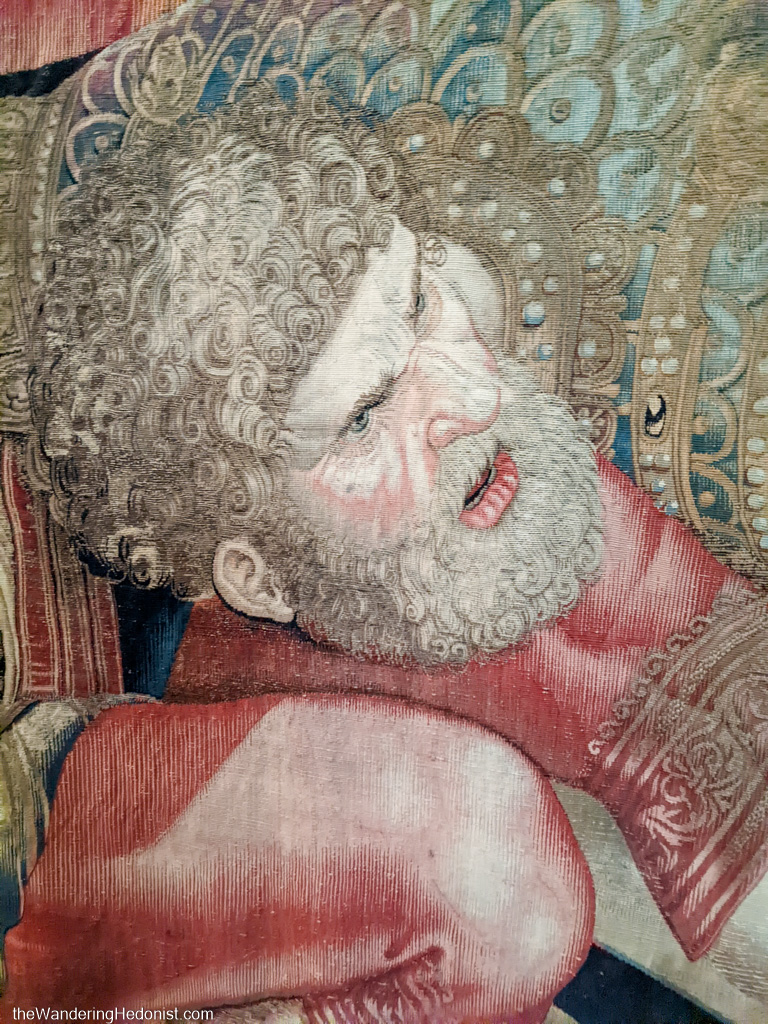
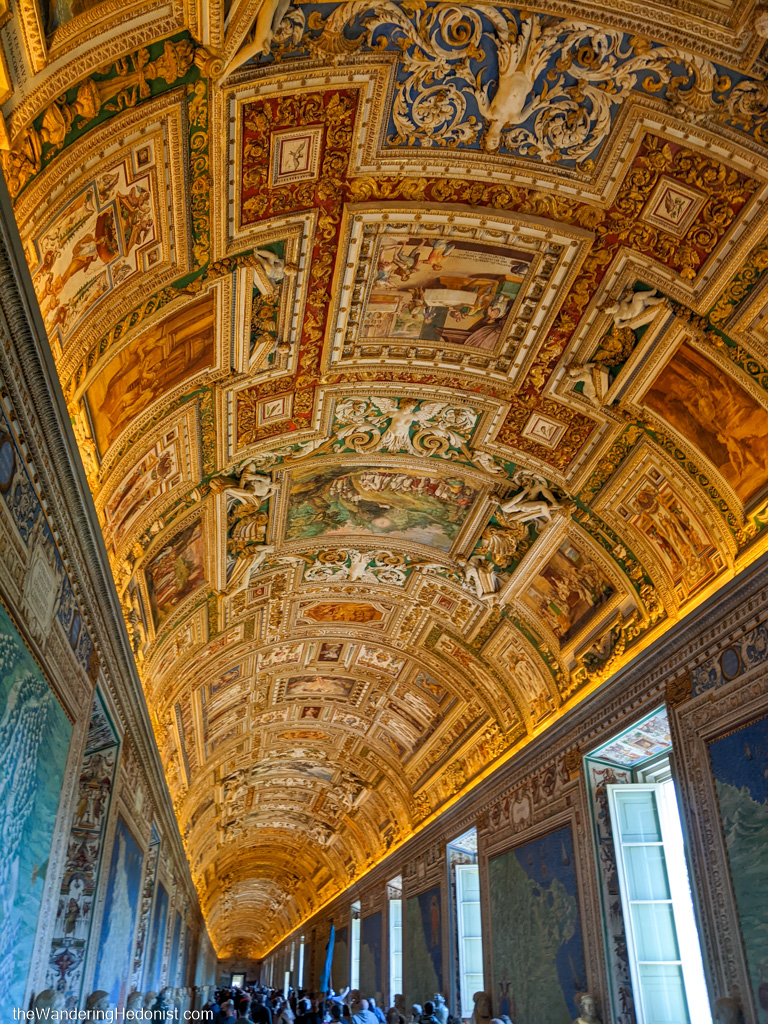
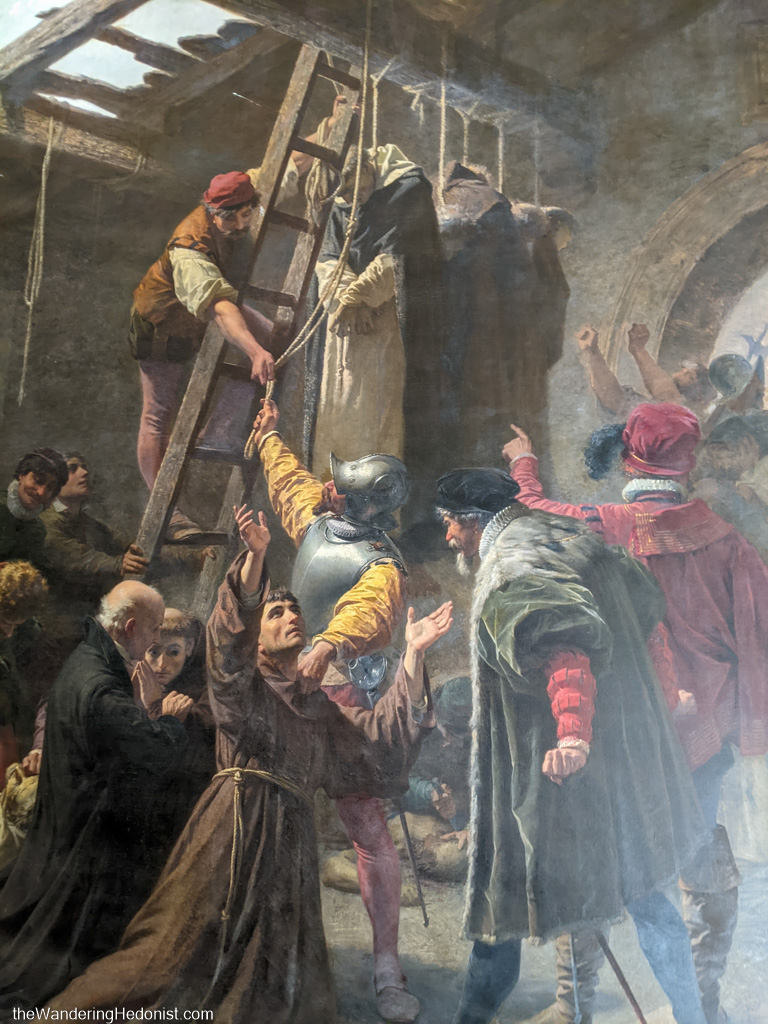
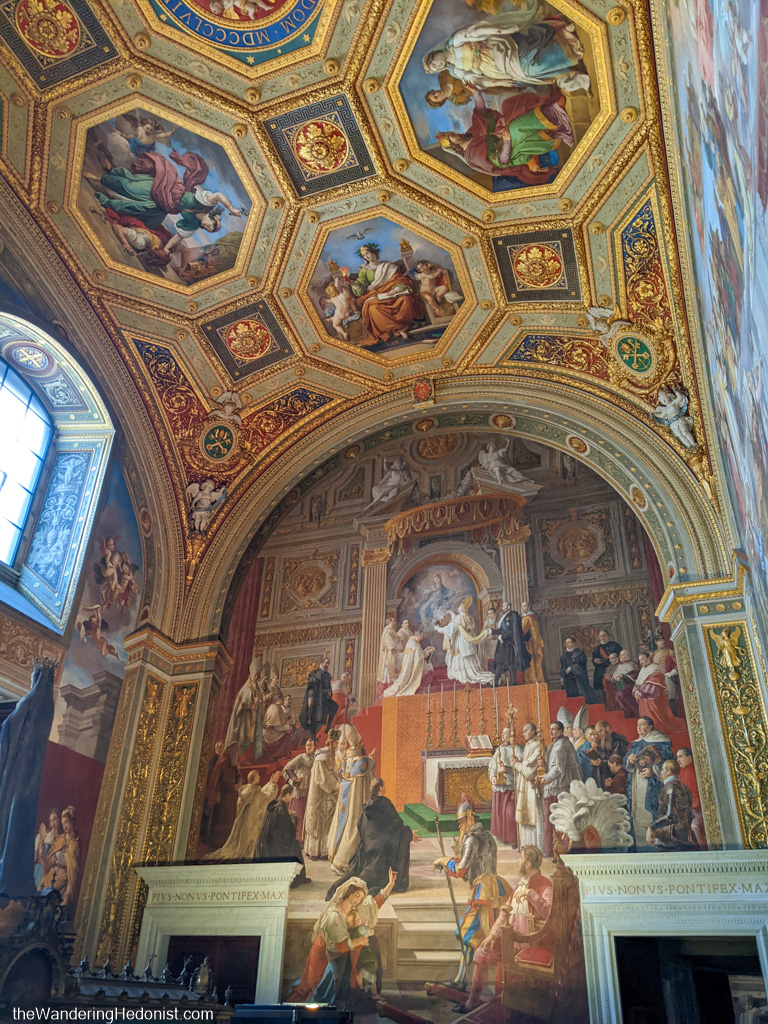
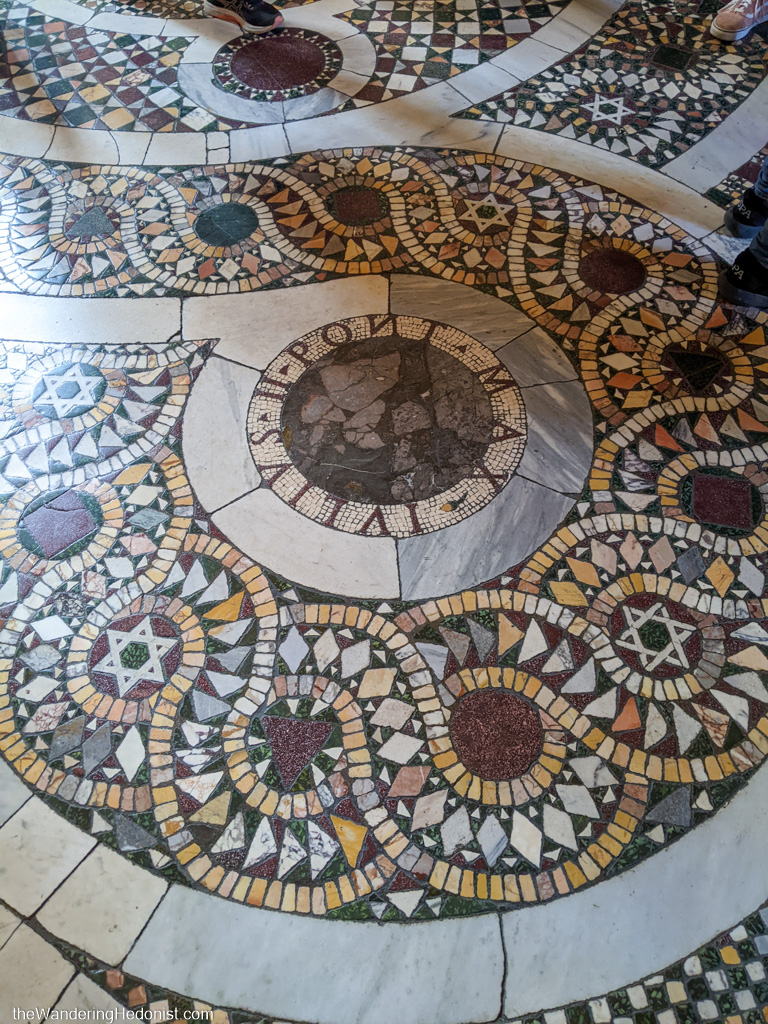
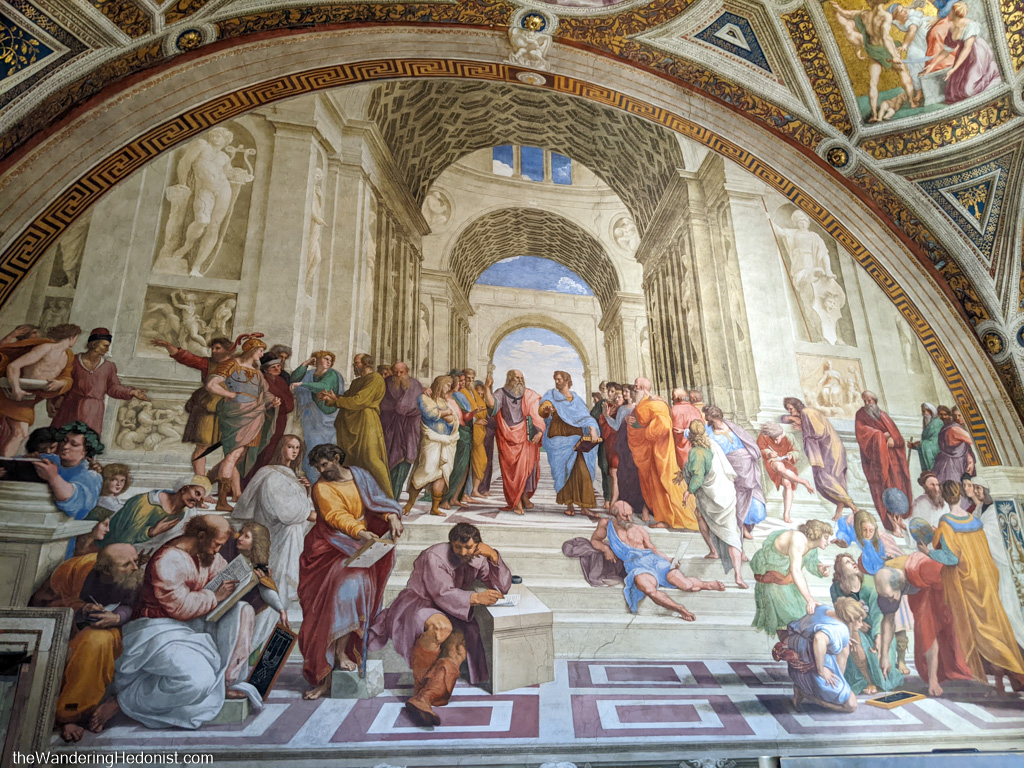
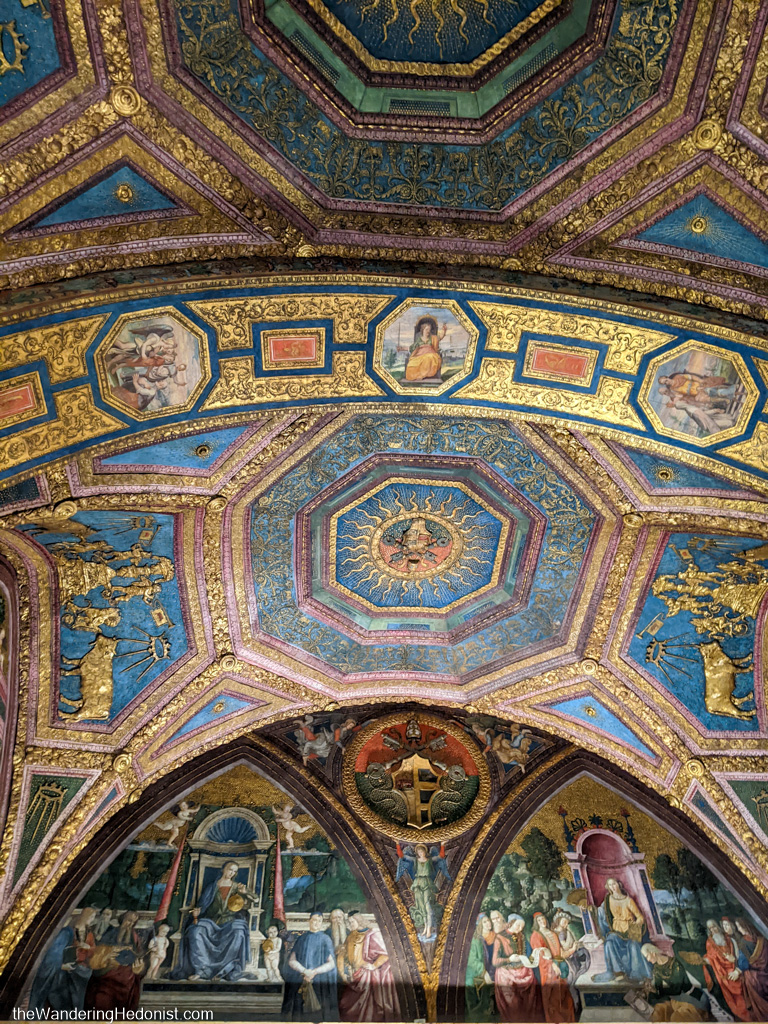
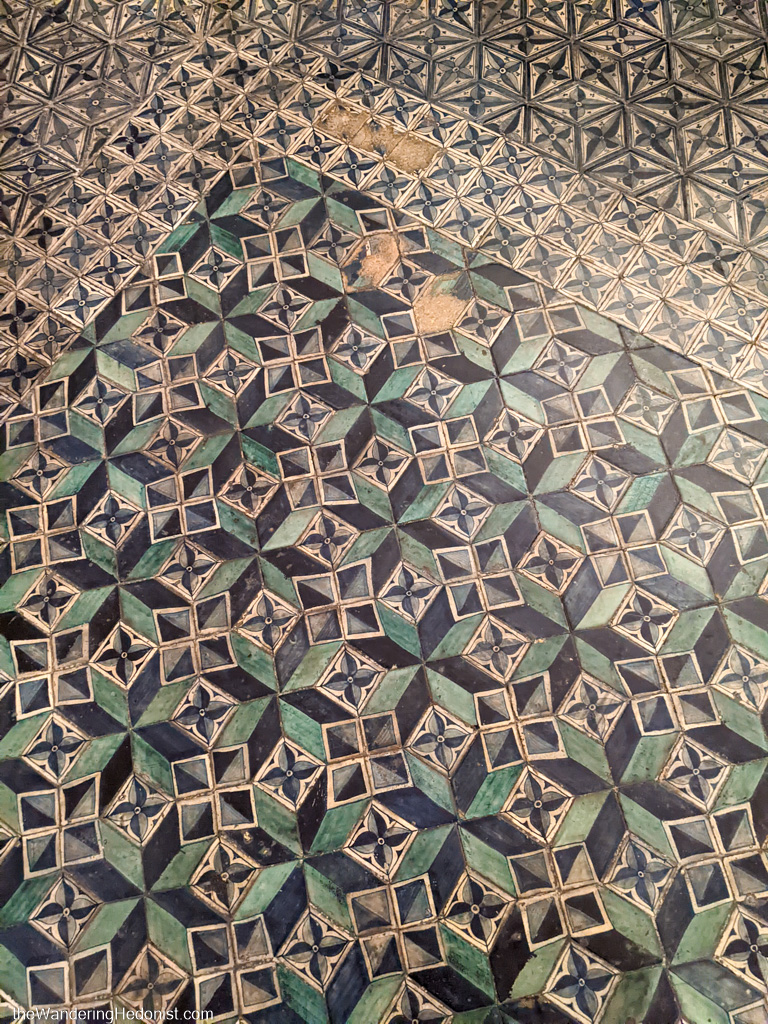
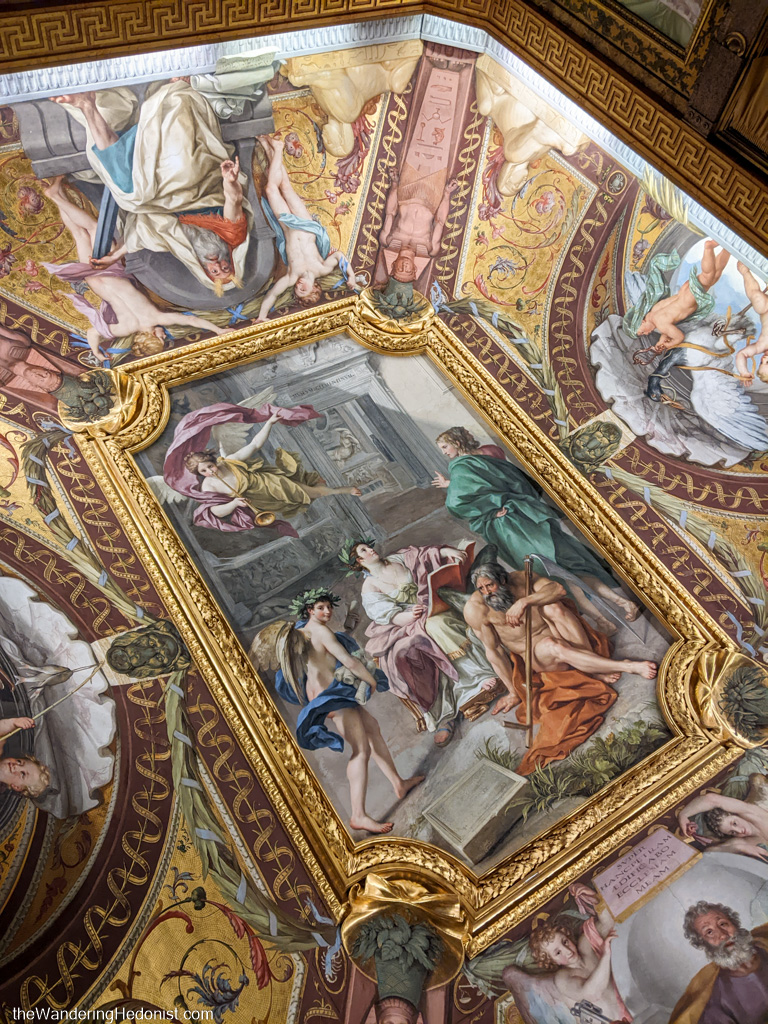
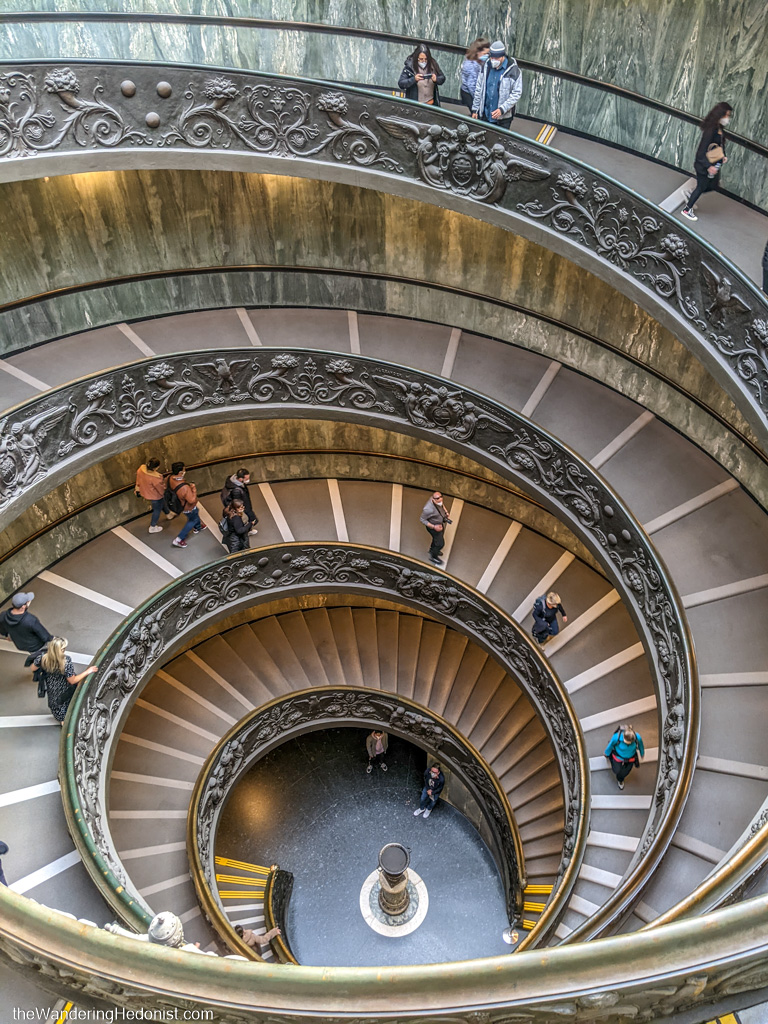
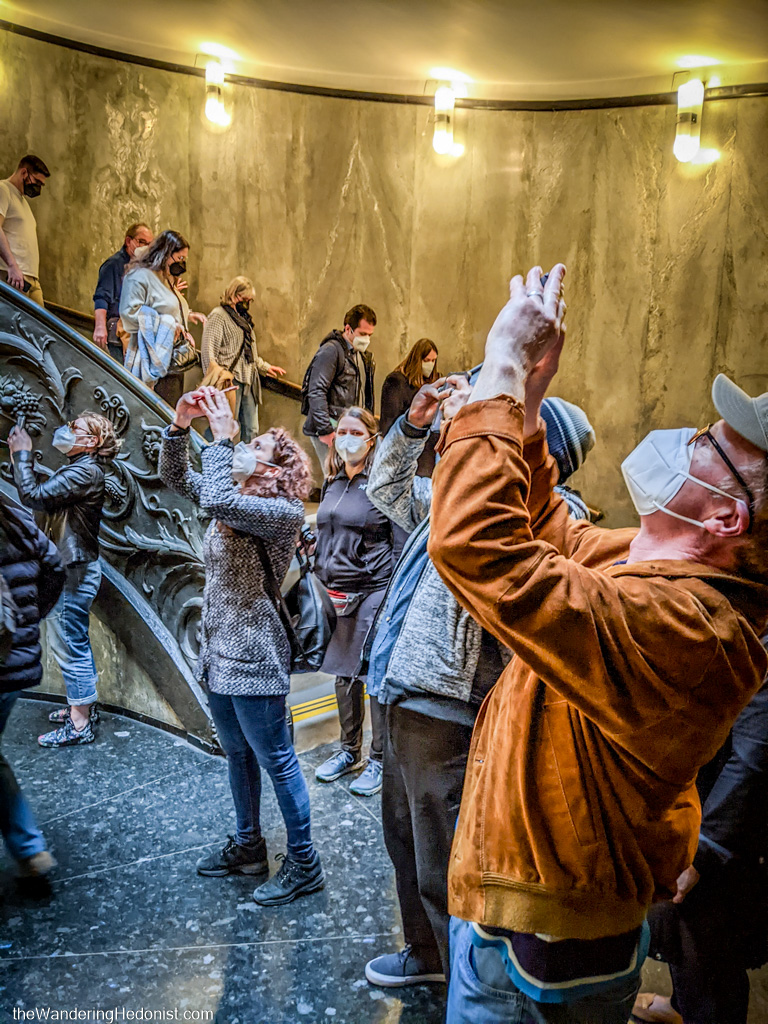
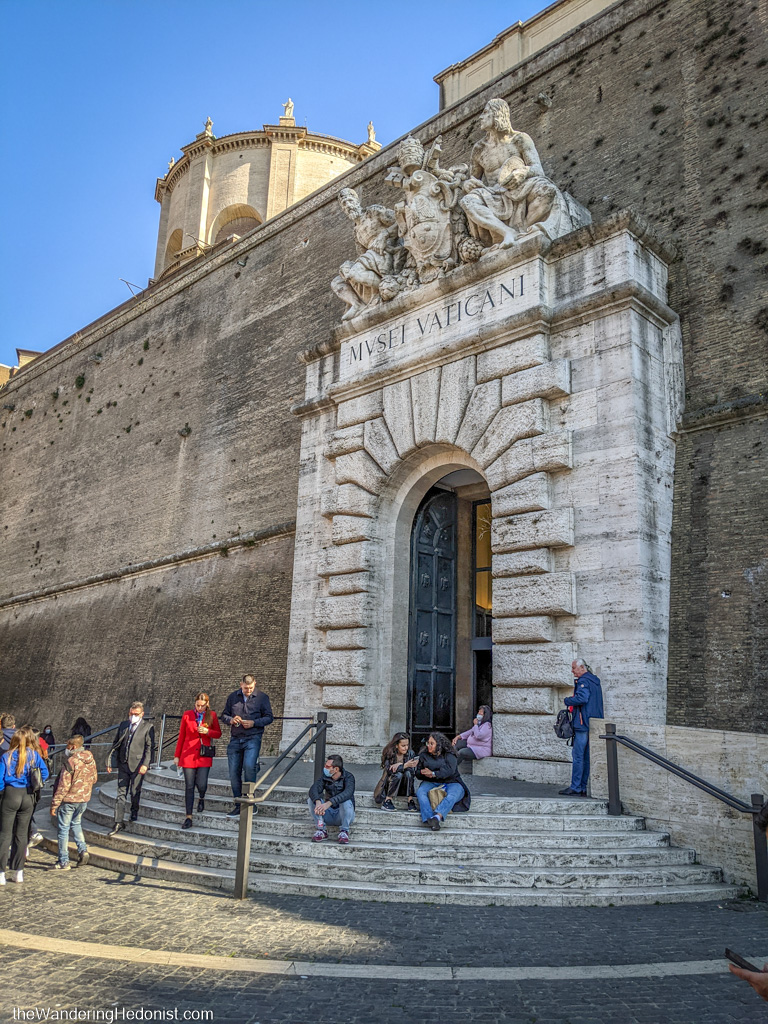
Leave a Reply